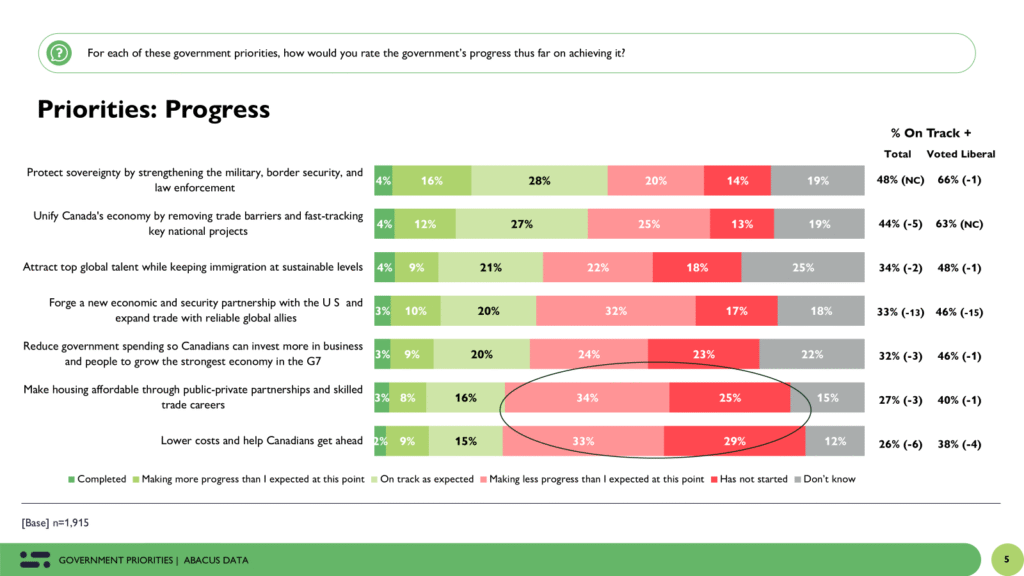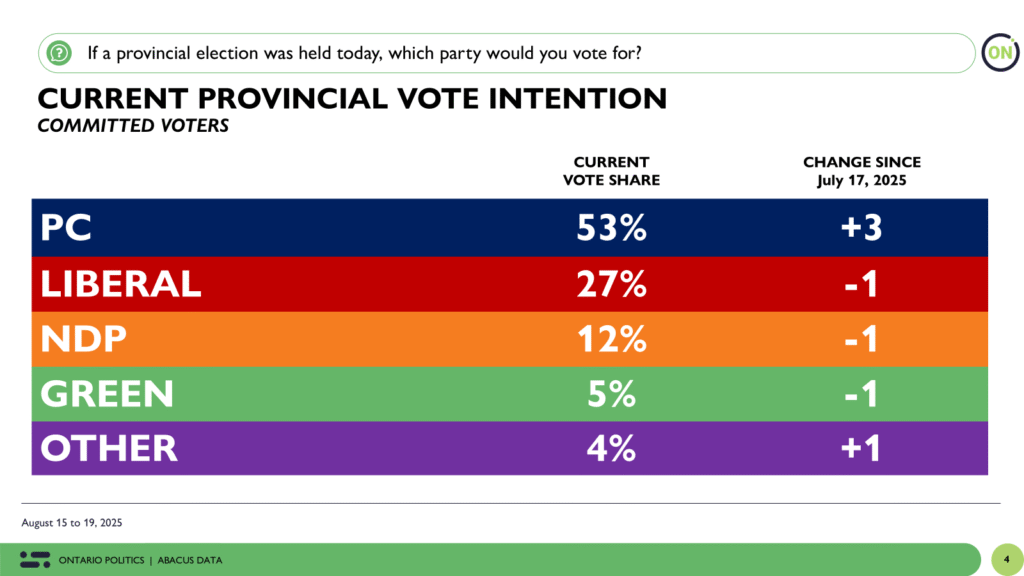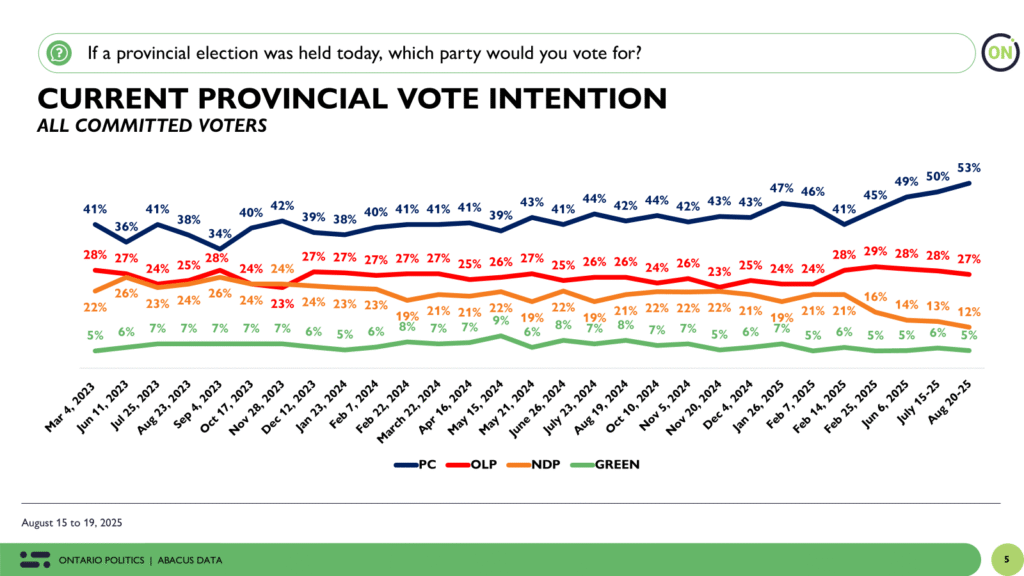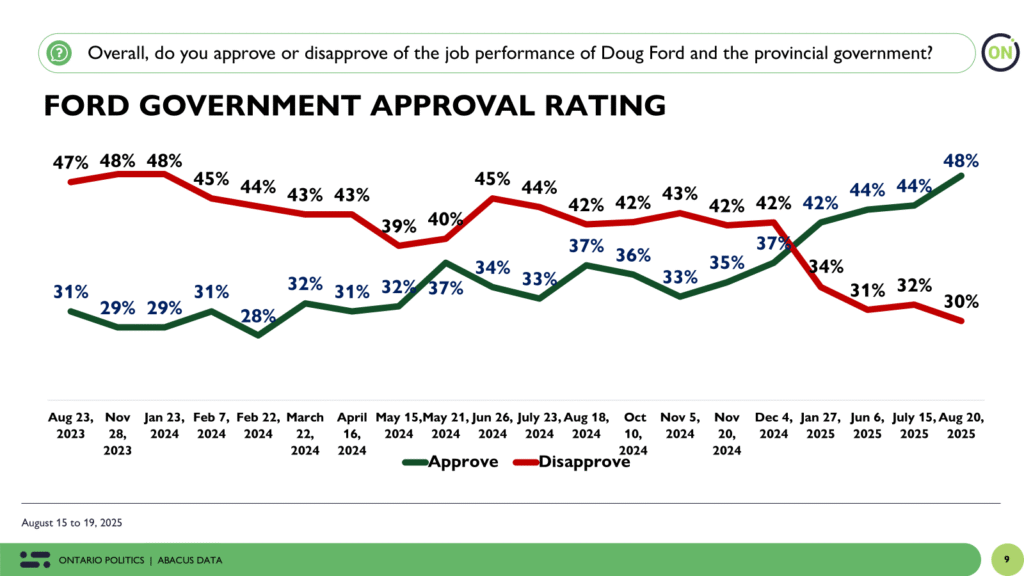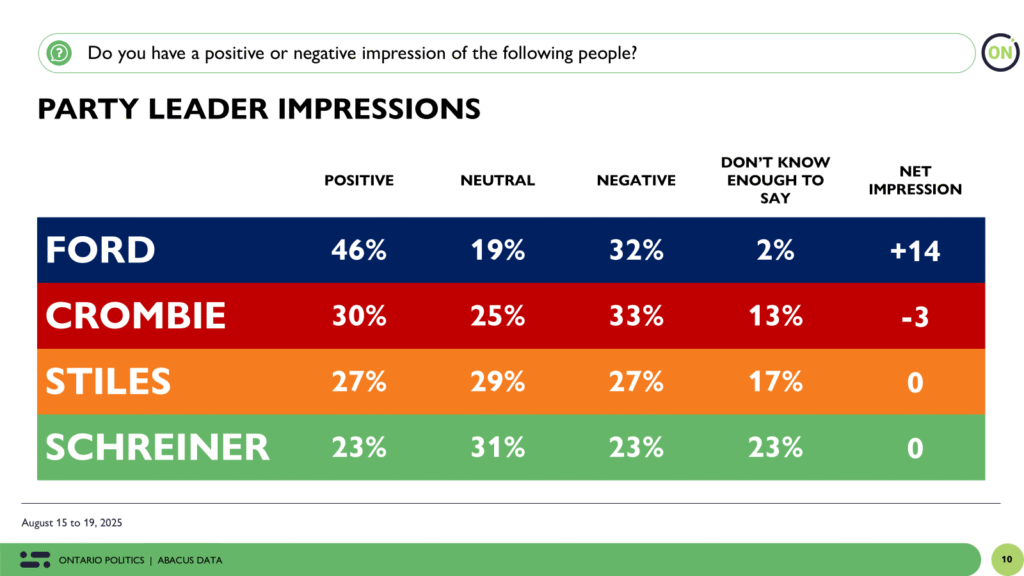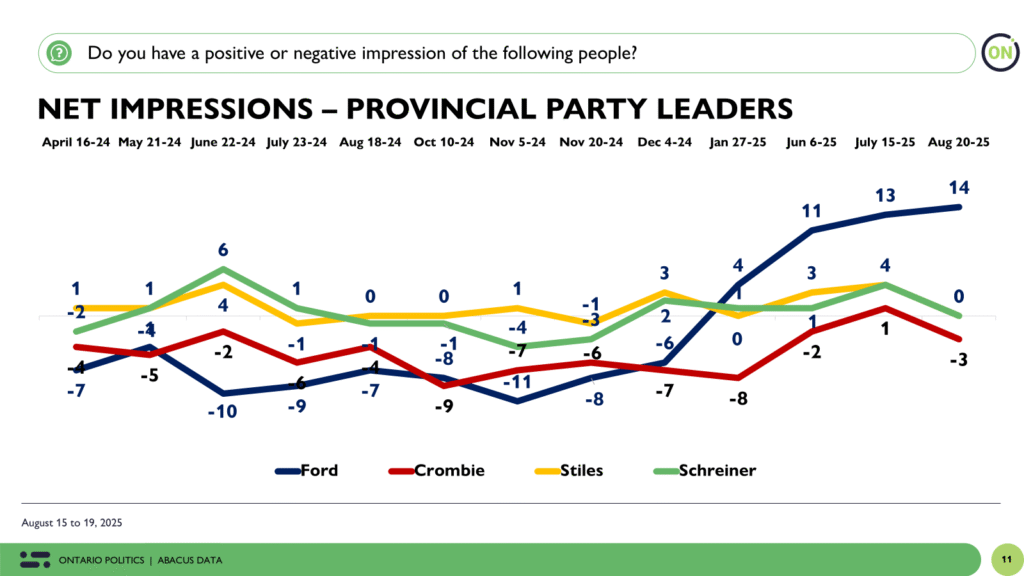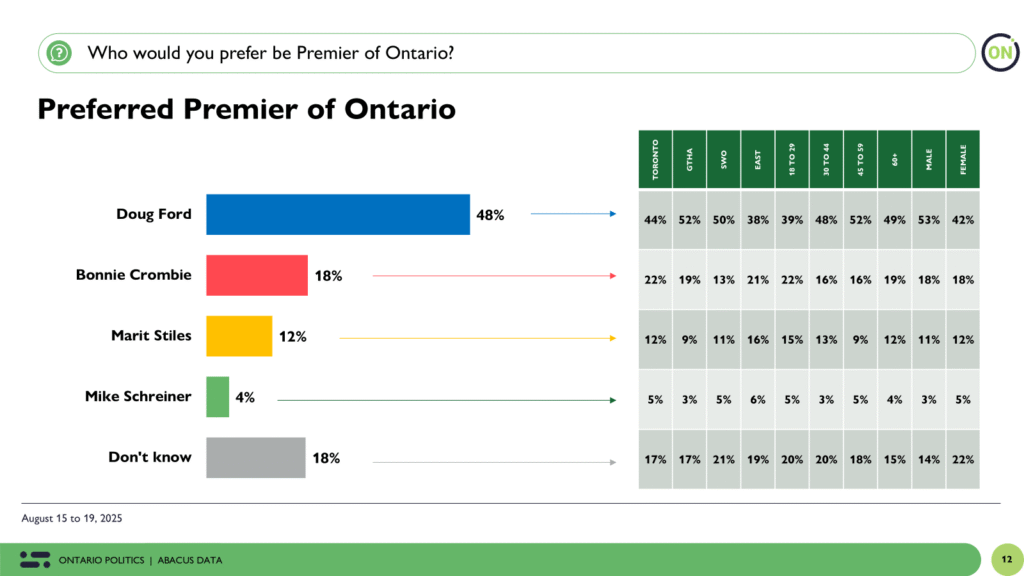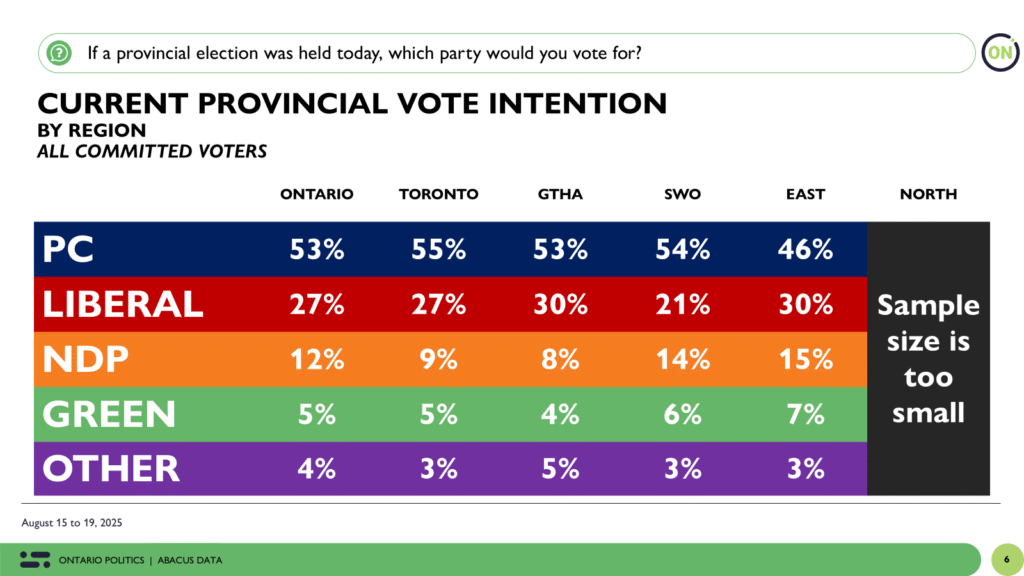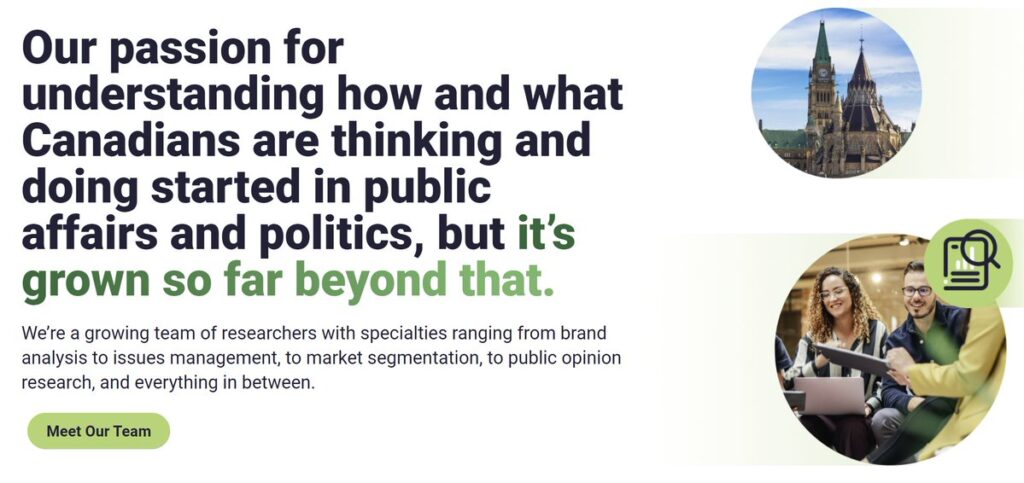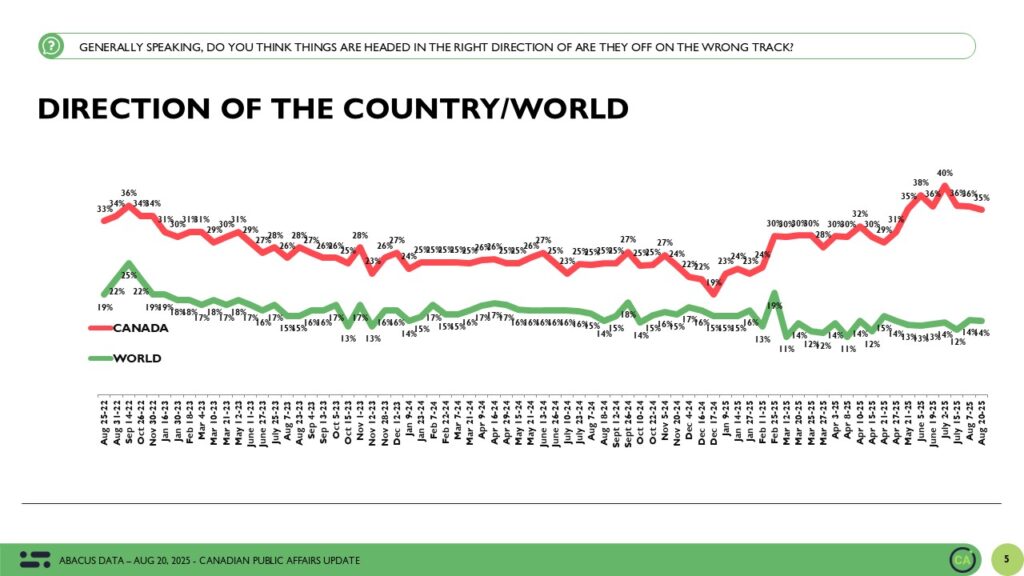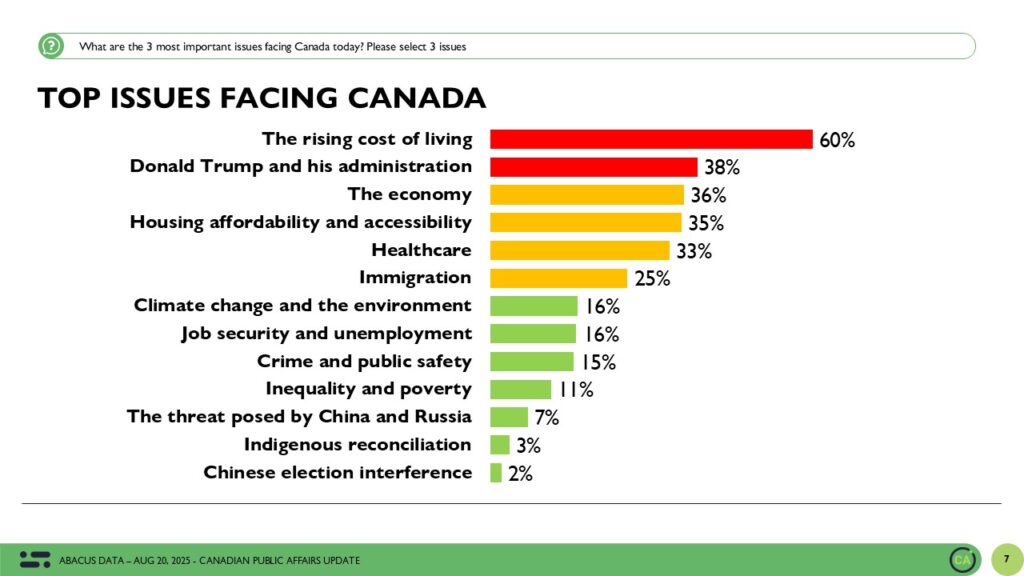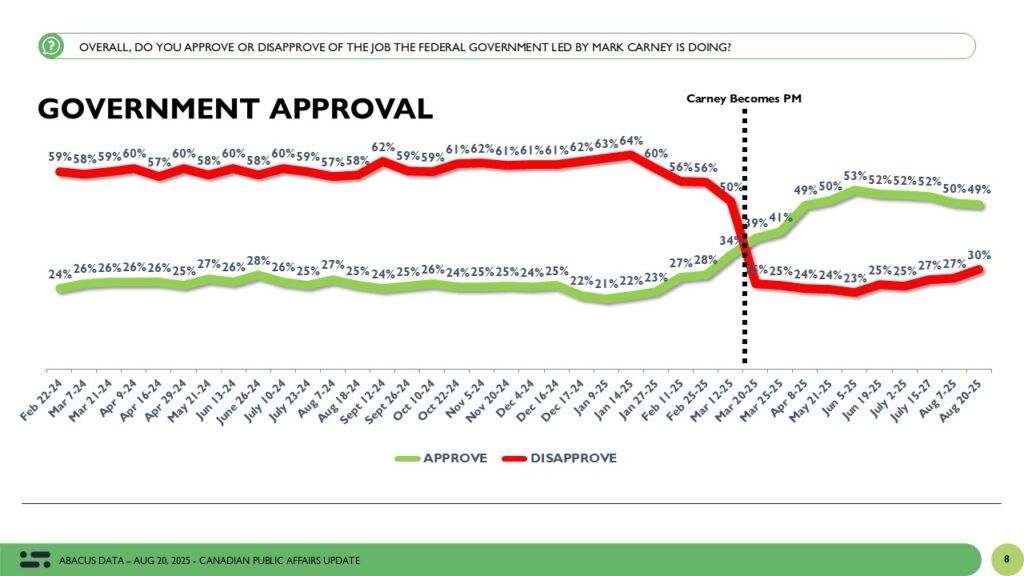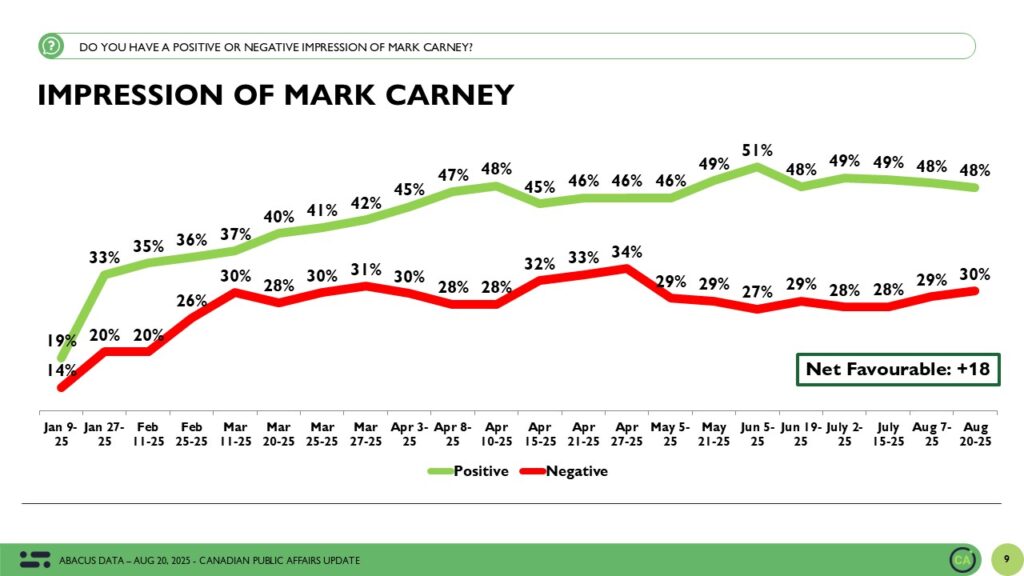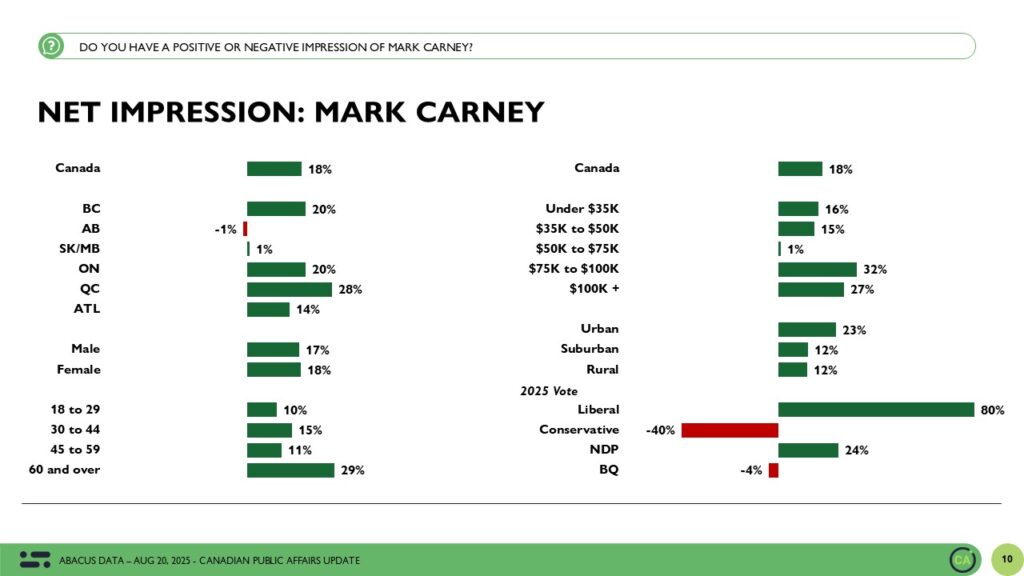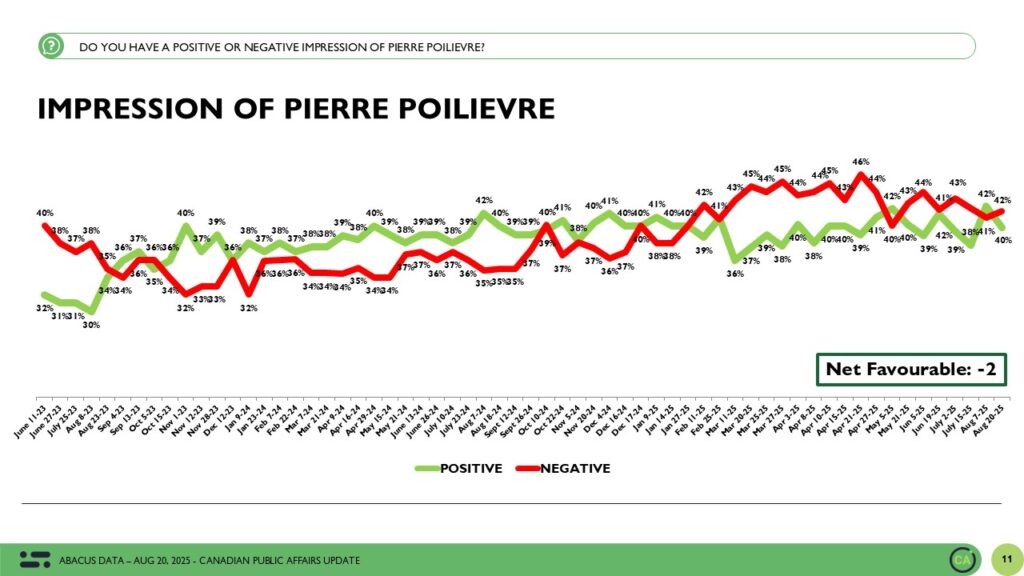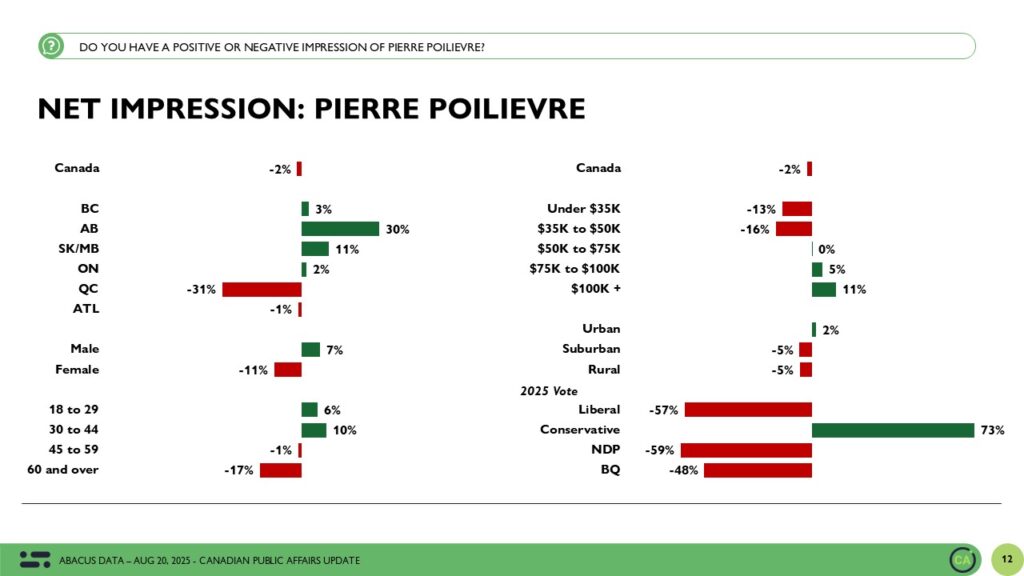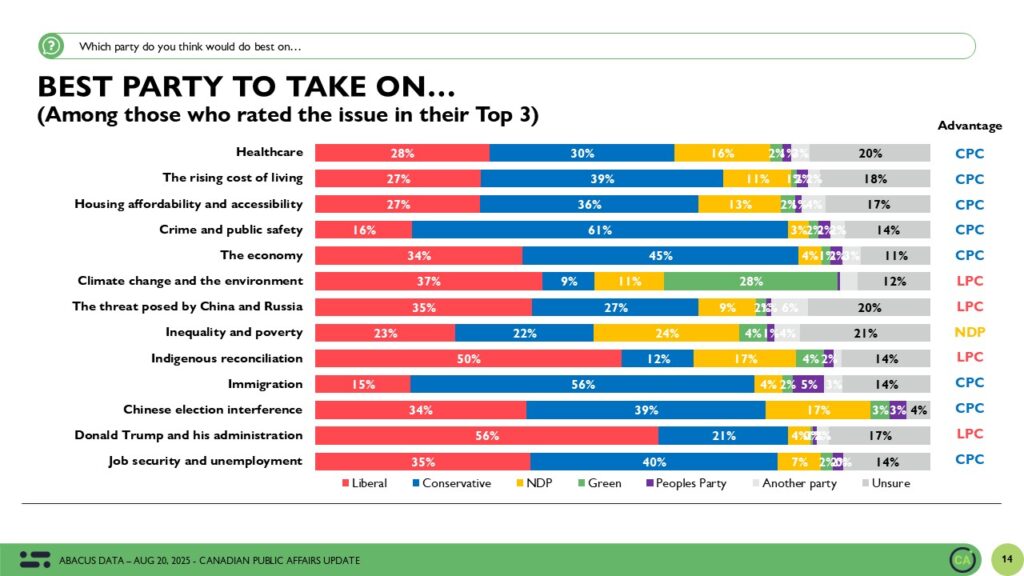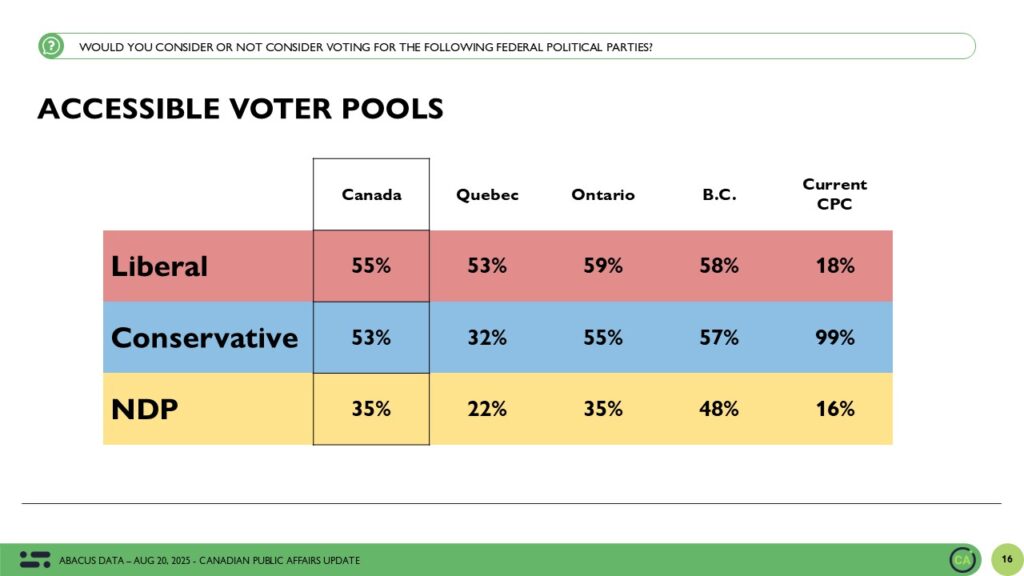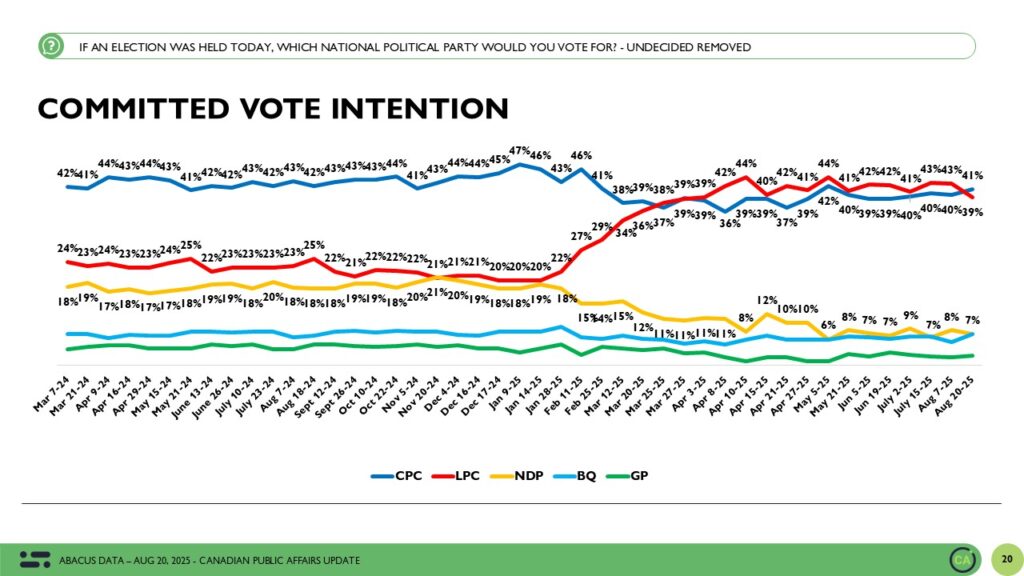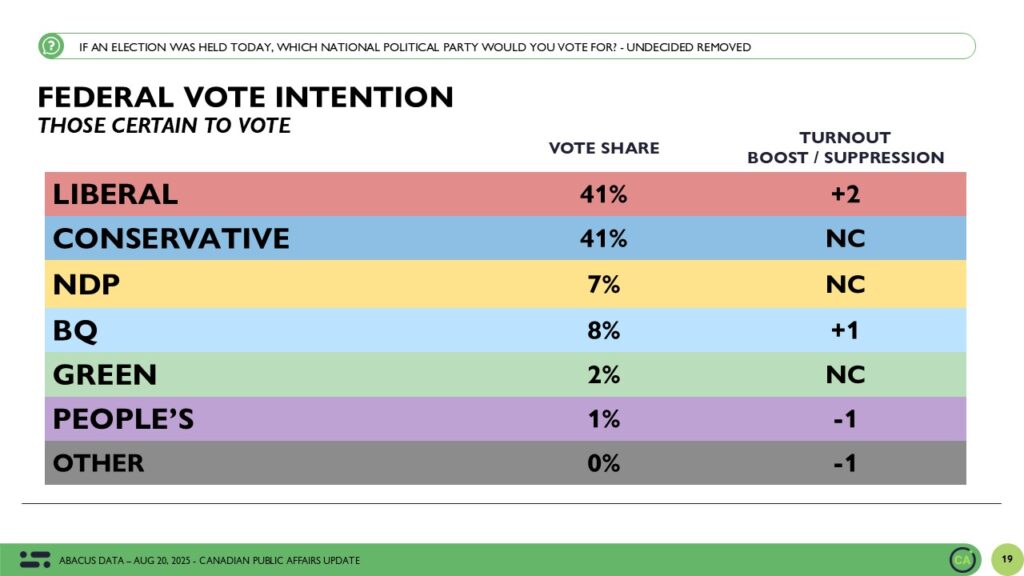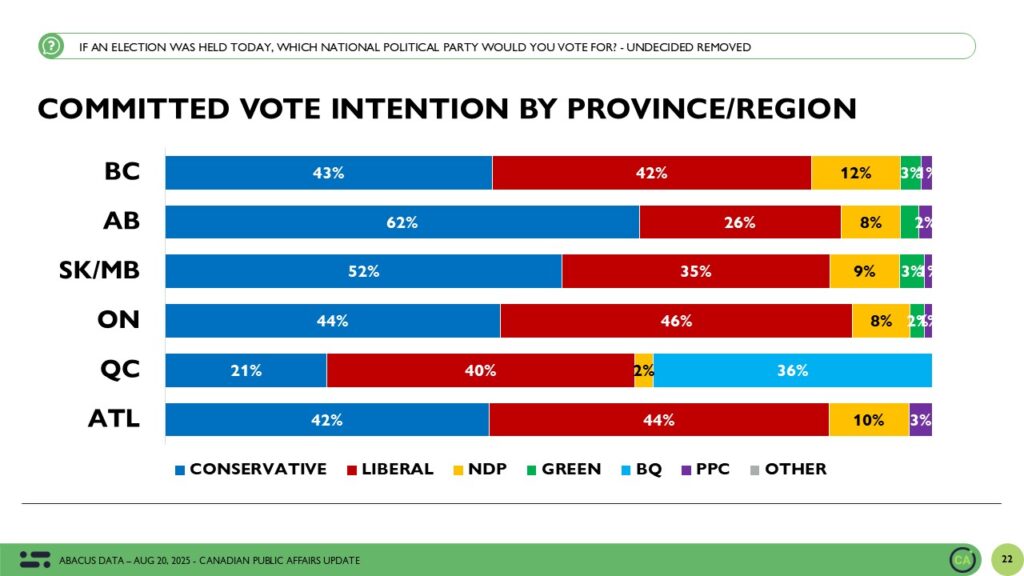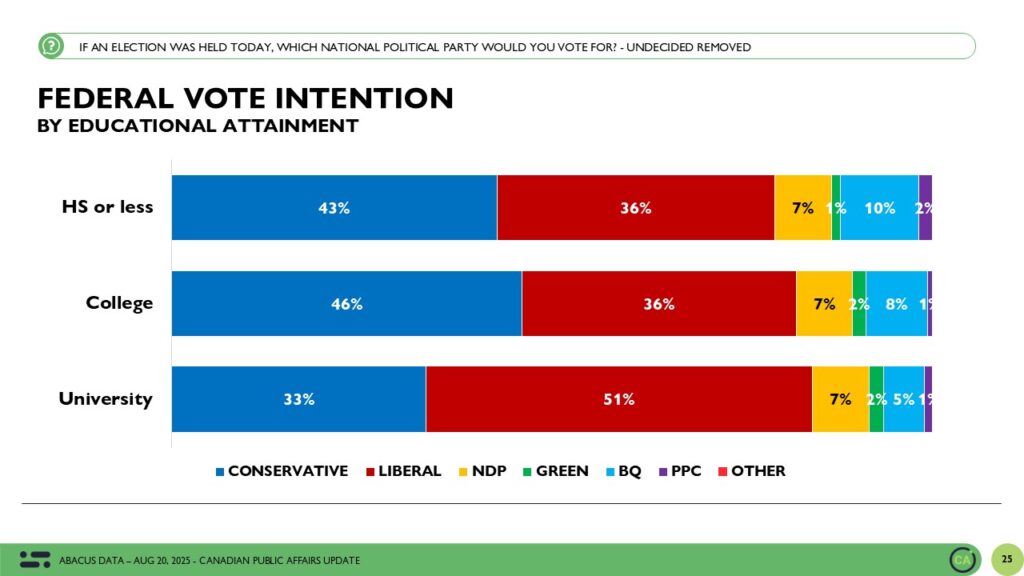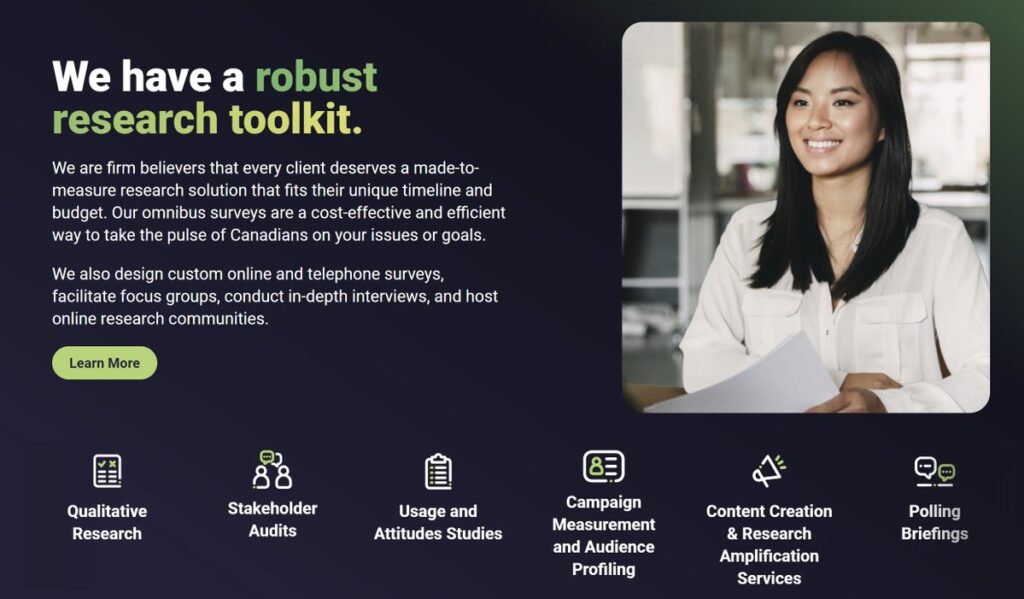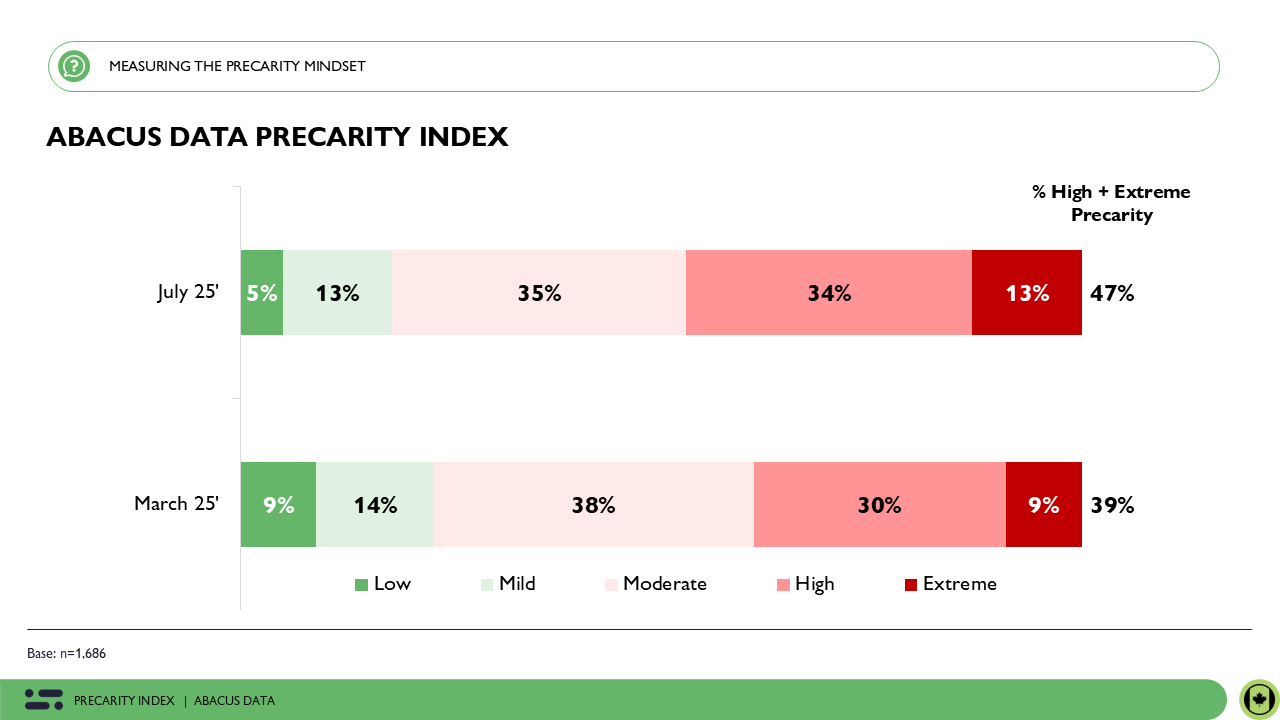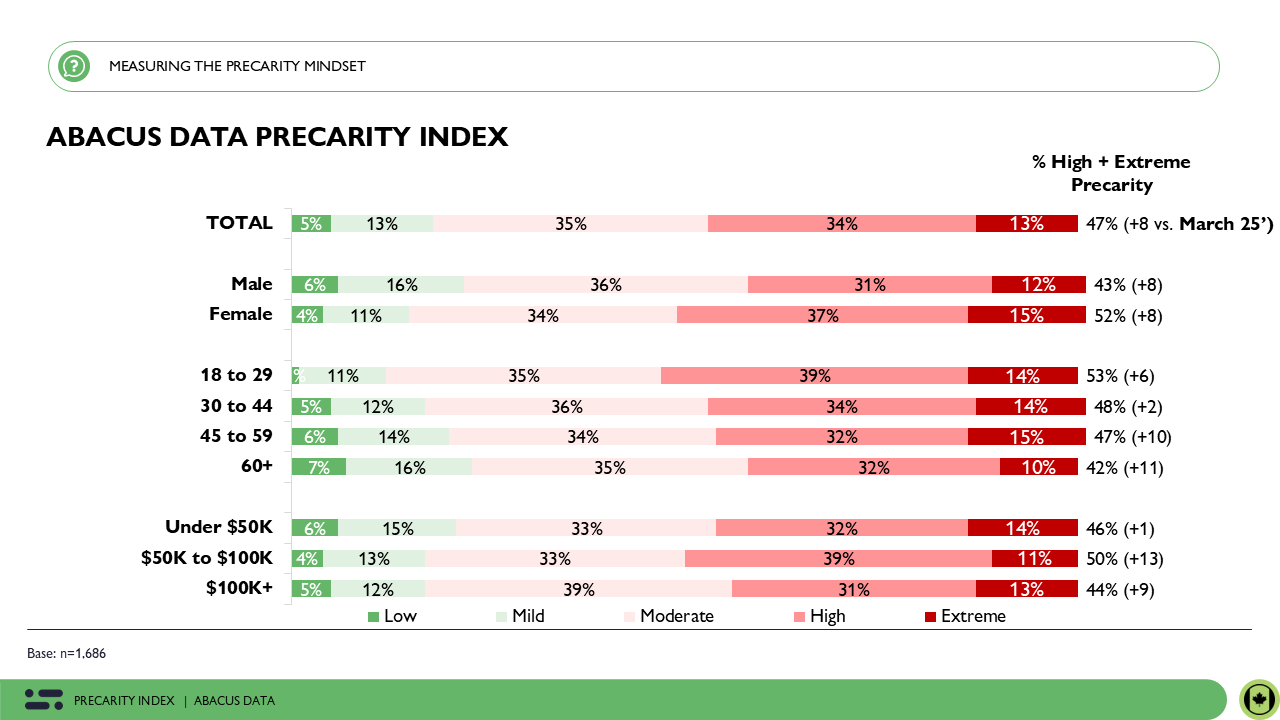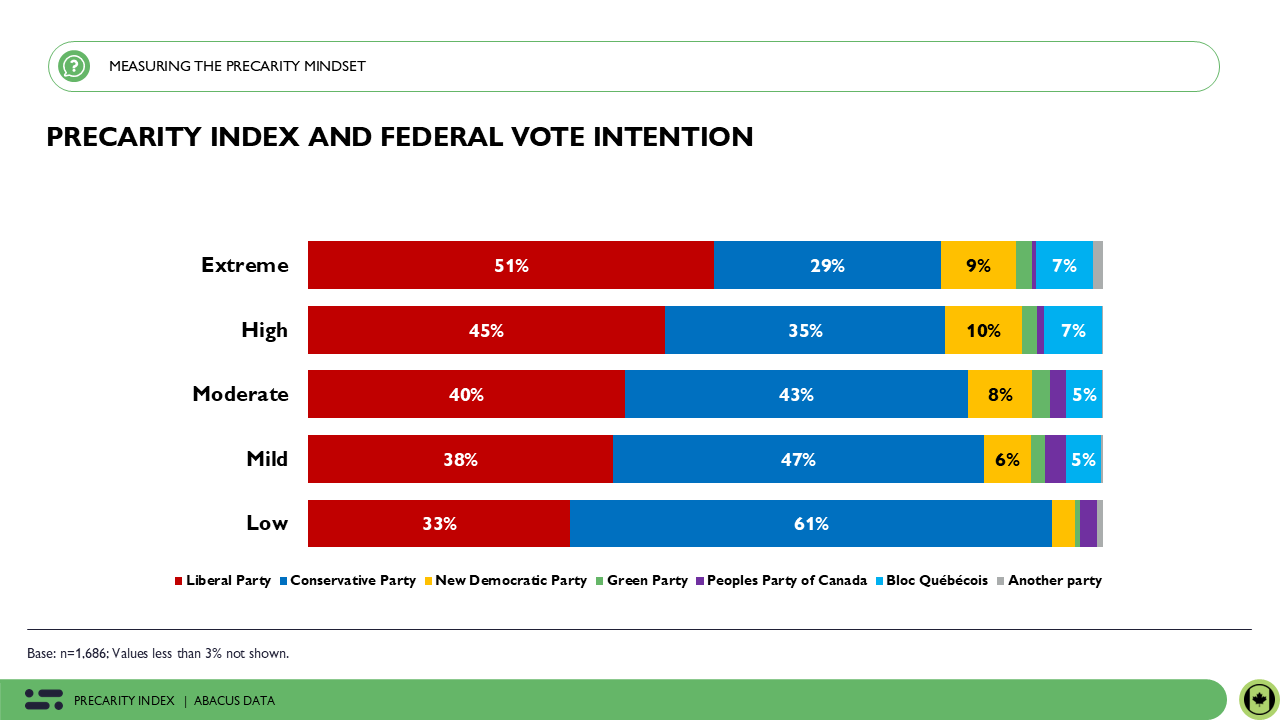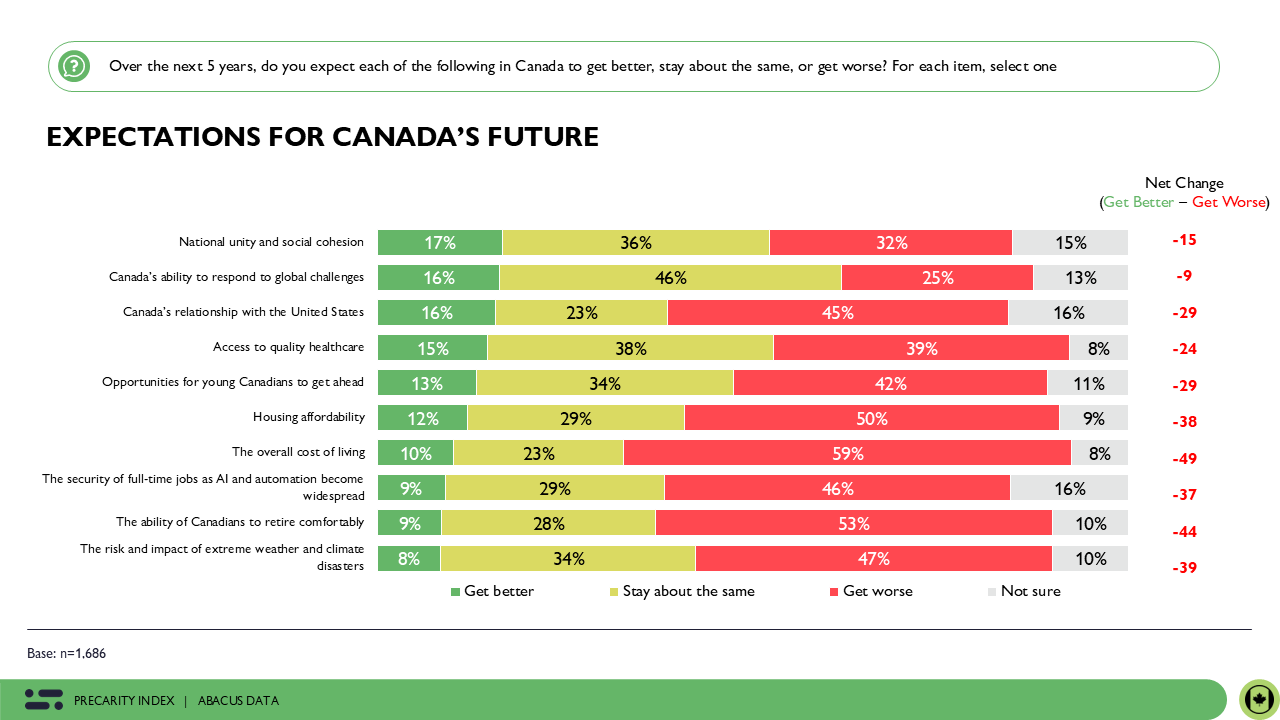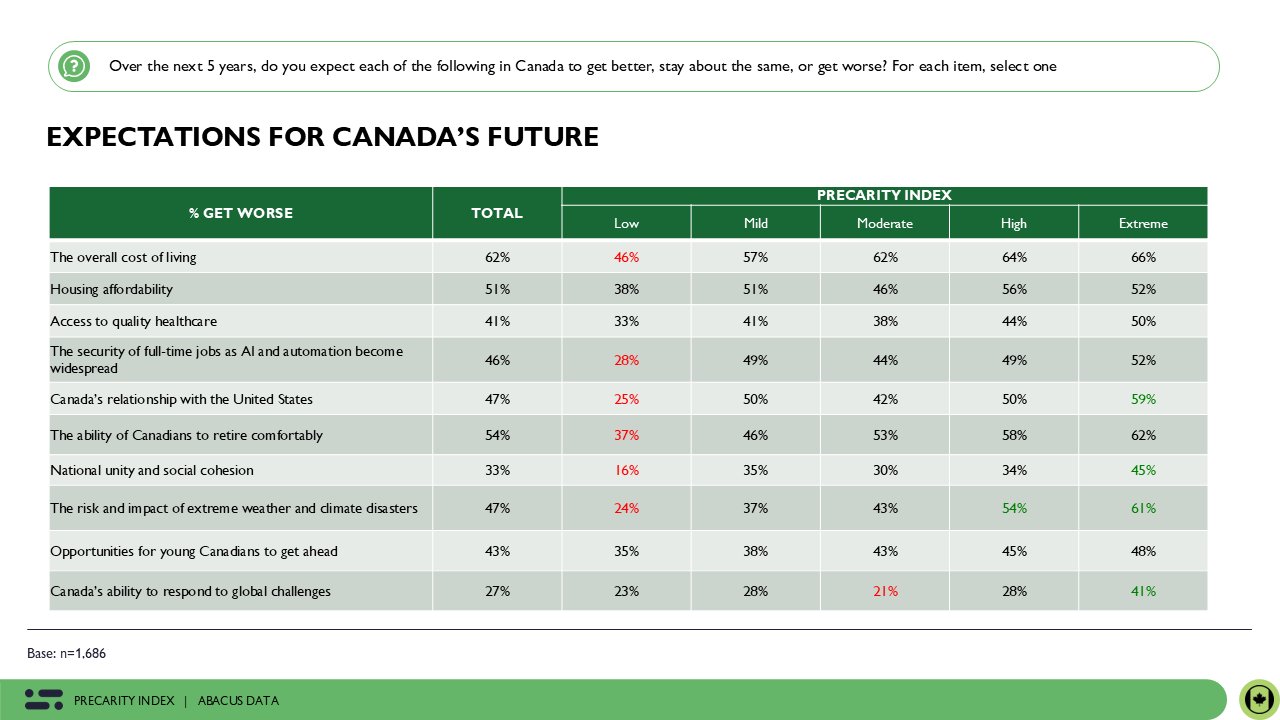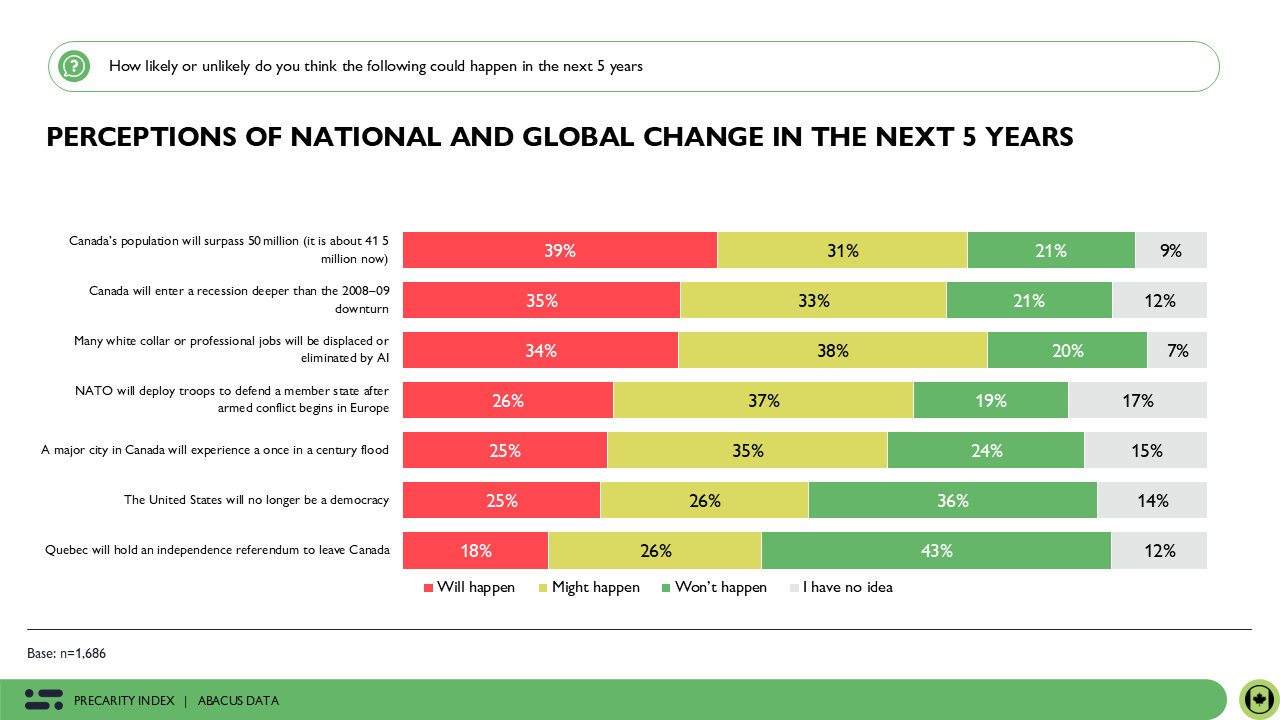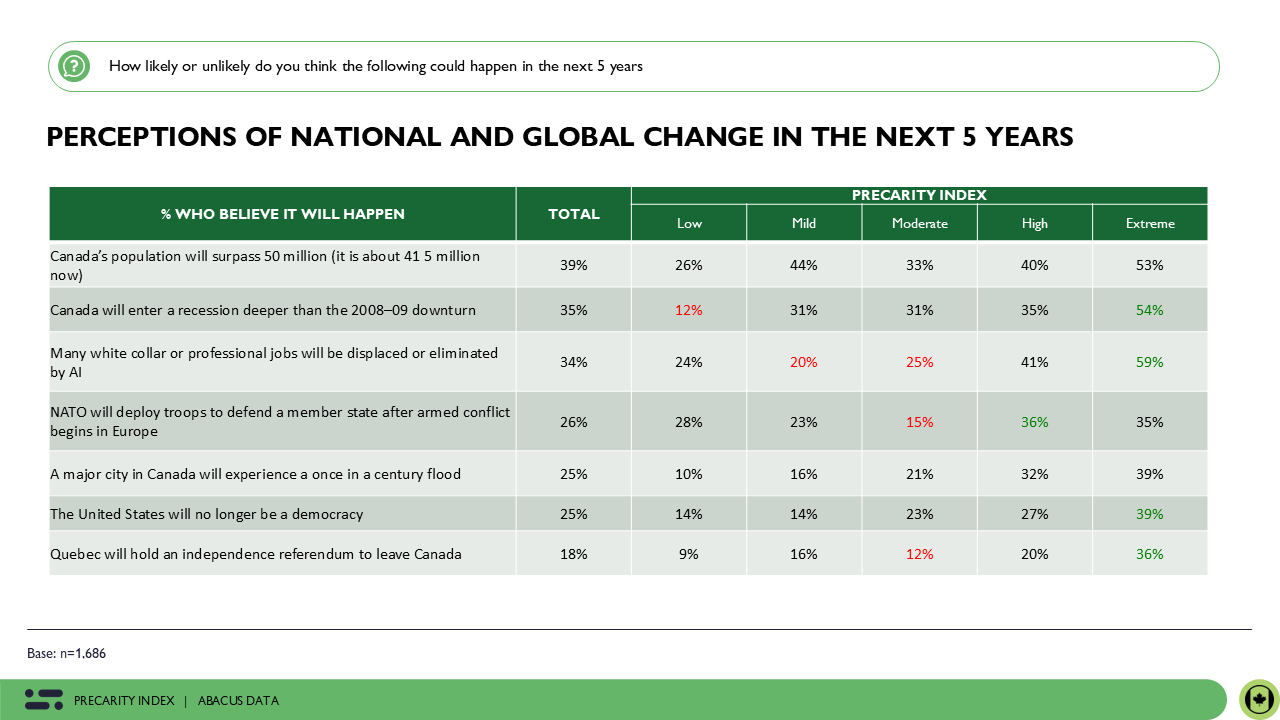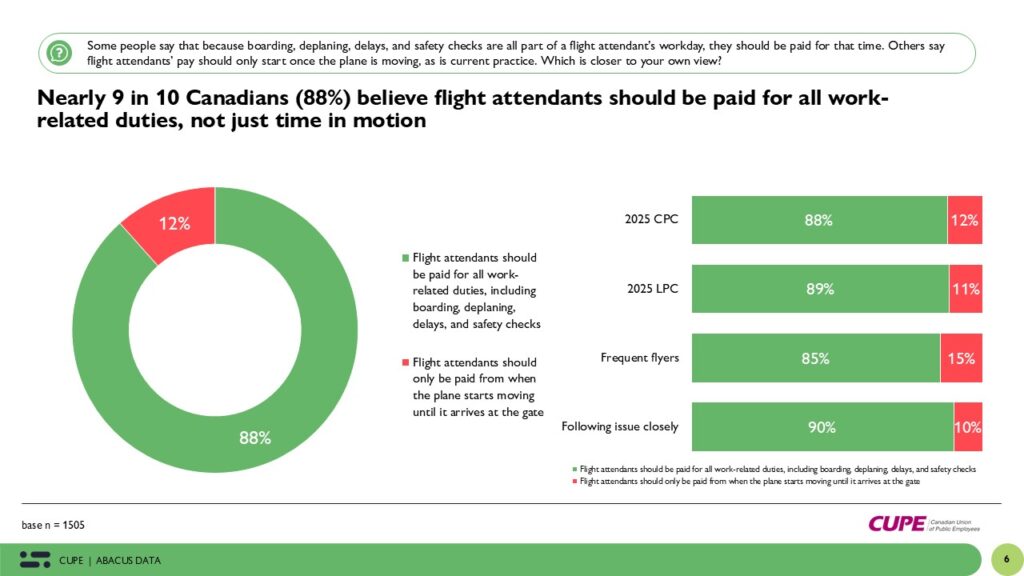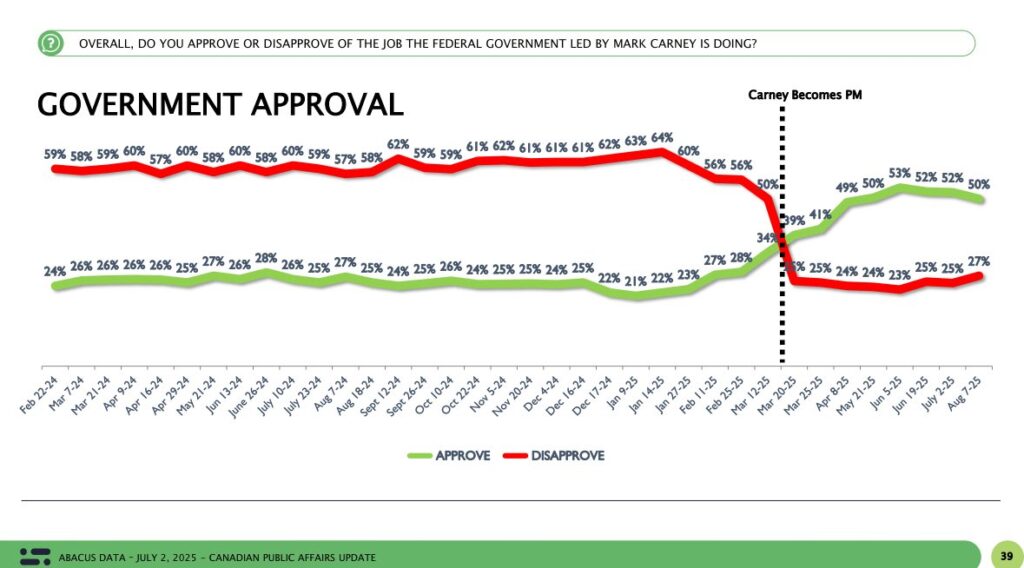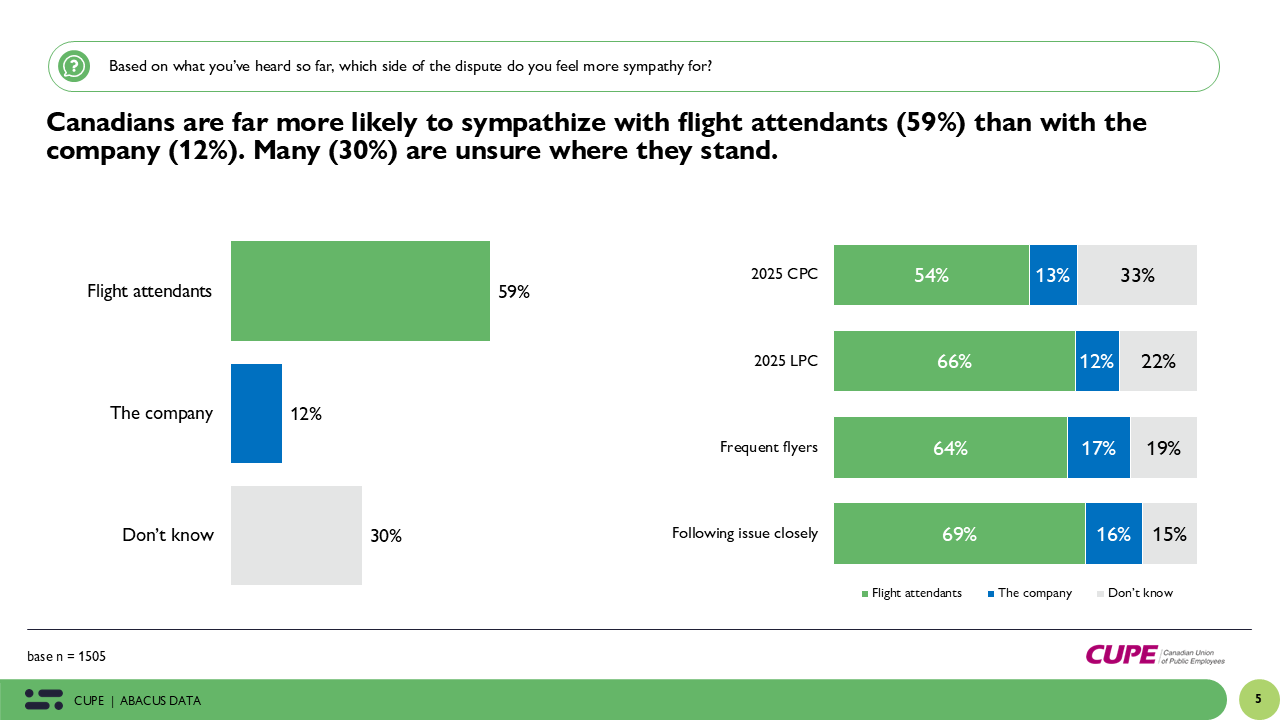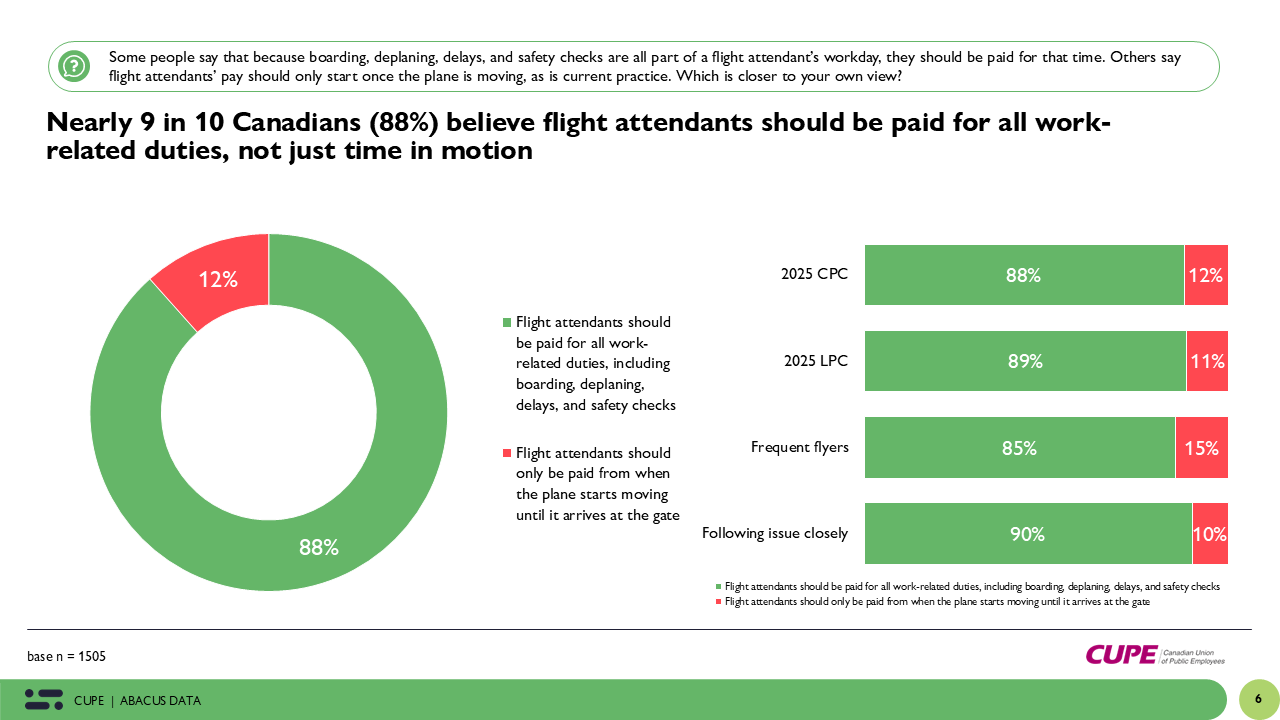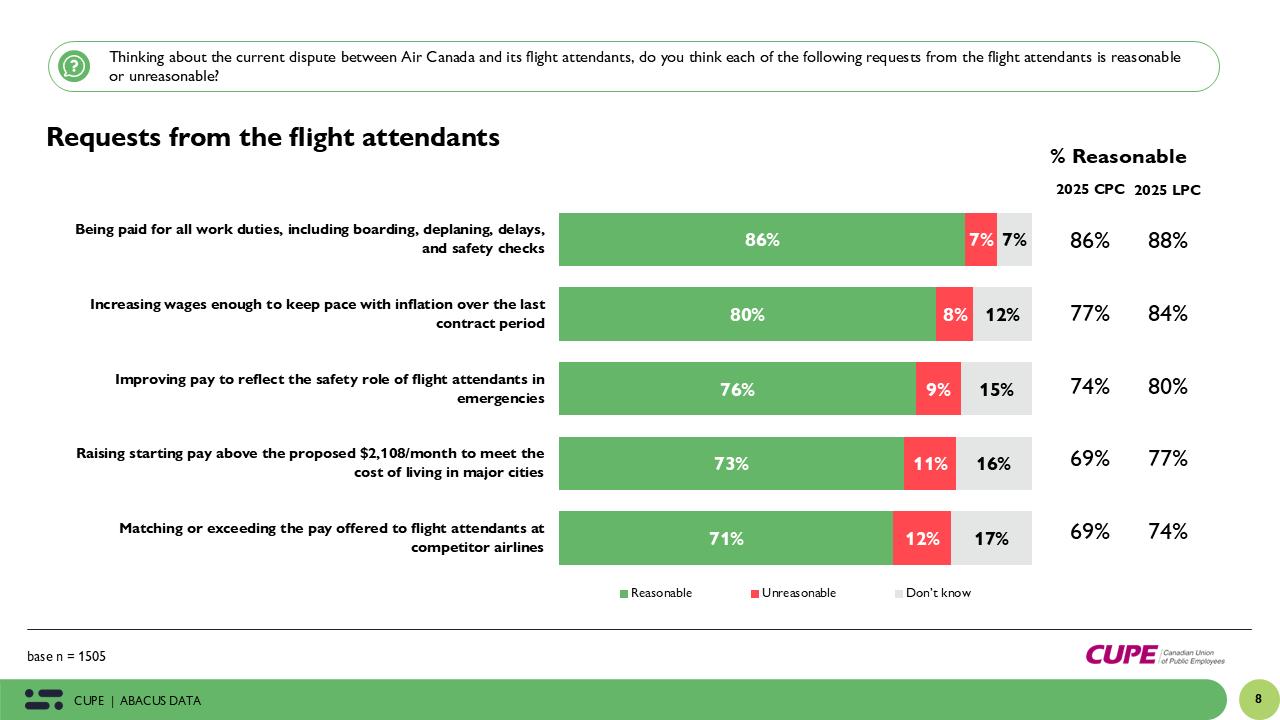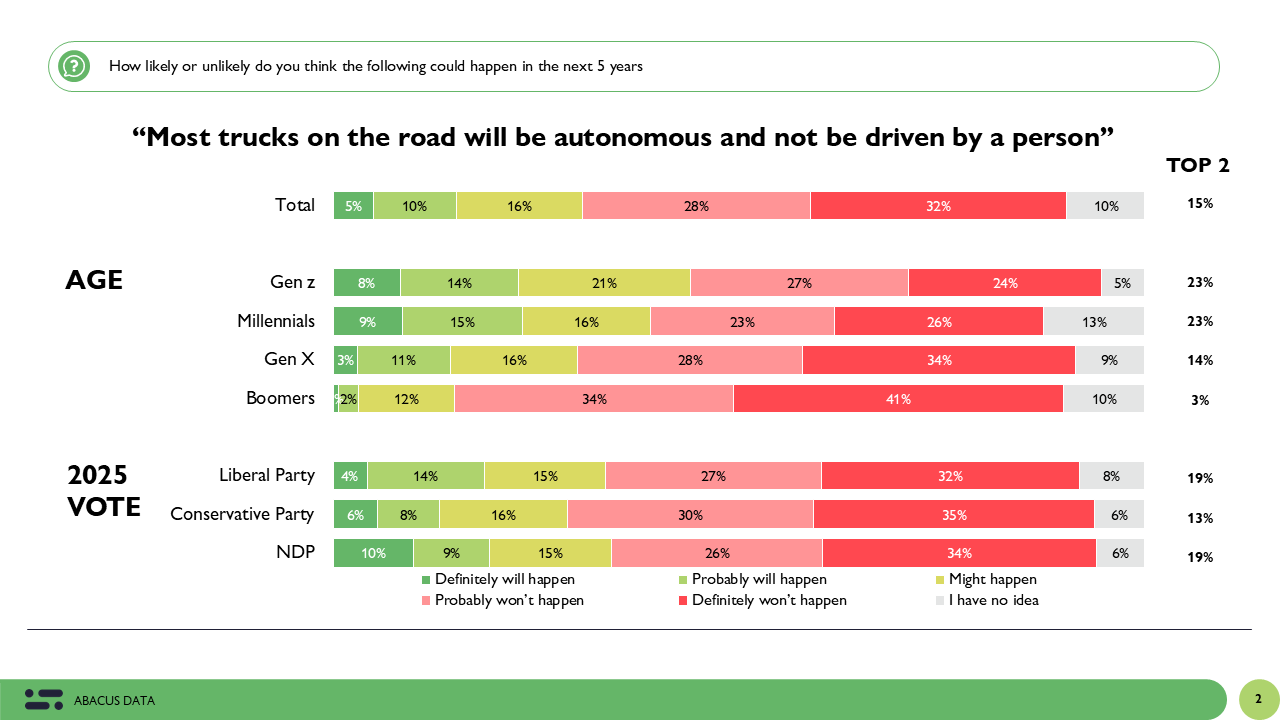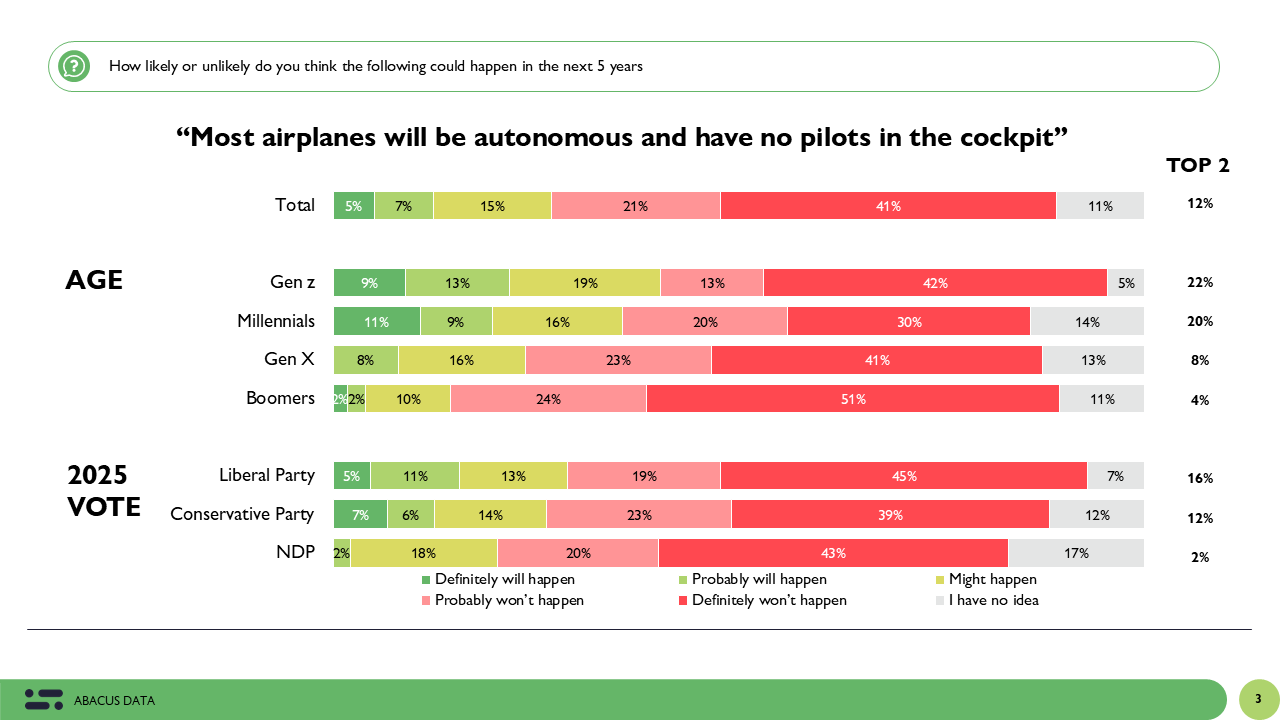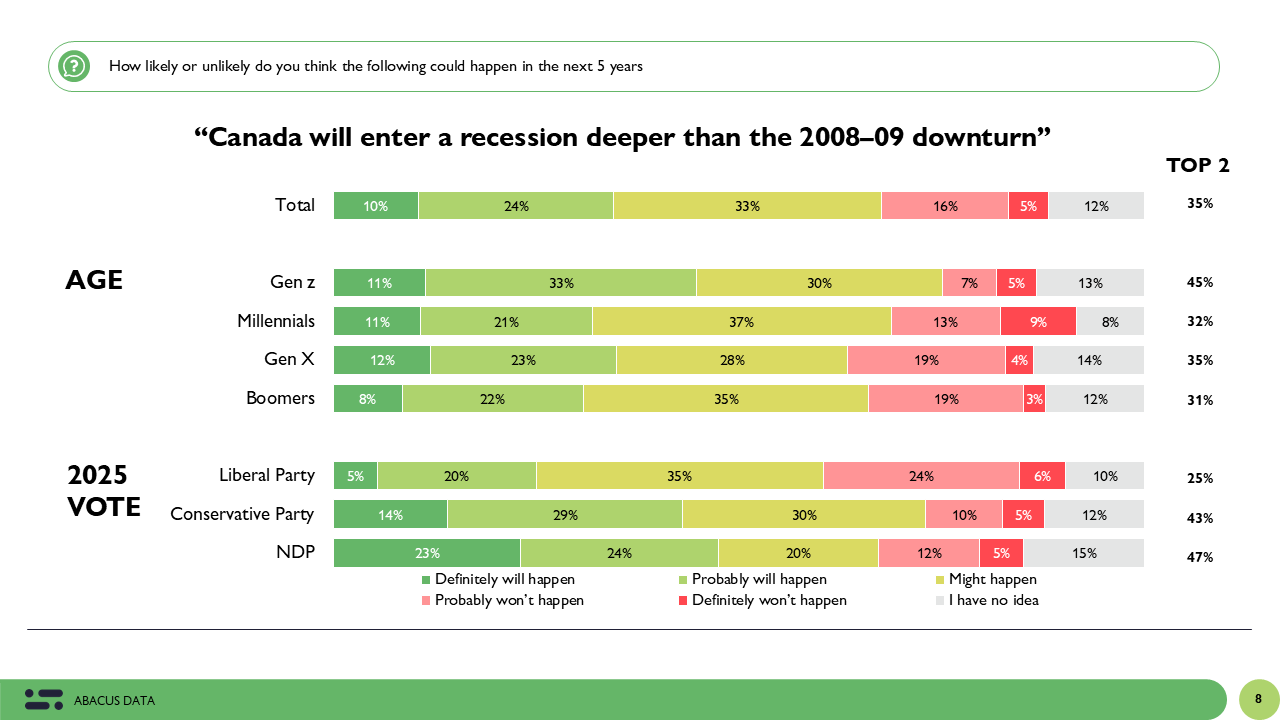Canadians See Cost of Living, Housing, and Healthcare as Bigger Threat Than Trump’s Policies
As the Liberal cabinet meets this week and Parliament prepares to resume, new polling shows a growing divide between what Canadians want their leaders to prioritize and what they believe Ottawa is actually focused on. Between August 28 and September 2, 2025, Abacus Data conducted a national poll with 1,500 Canadians (aged 18+) to explore whether Canadians feel the federal government is directing its attention to the issues that matter most, both at home and abroad.
While Canadians recognize that managing Donald Trump’s policies is critically important – especially for trade, security, and the economy – many fear it may be taking too much attention away from urgent challenges at home, like housing affordability, healthcare, and rising costs.
A Perception Gap at the Heart of Politics
Six in ten Canadians (61%) believe the federal government is paying too much attention on Donald Trump when urgent domestic challenges – like housing, healthcare, and rising costs – need solutions, while just one in three (33%) think Ottawa is focusing the right amount of attention to Trump.
It’s worth noting that while dealing with the Trump administration and securing a trade deal is critical to many of those same domestic issues, there is a gap in people’s views.
This concern cuts across demographics. Younger Canadians are especially critical, with 70% of those aged 18–44 saying the government is too focused on Donald Trump. Even among Liberal voters, more than half (51%) believe their government is distracted by Trump when pressing domestic problems remain unresolved (compared to 45% who believe it is the right amount of attention).
As Parliament gets set to resume, this perception gap will shape how Canadians judge the government’s performance, and whether they believe Ottawa can balance international challenges with urgent priorities at home. It’s also an important signal for government to really think about how it frames the work its doing and whether or not its reaching all audiences with its communications.
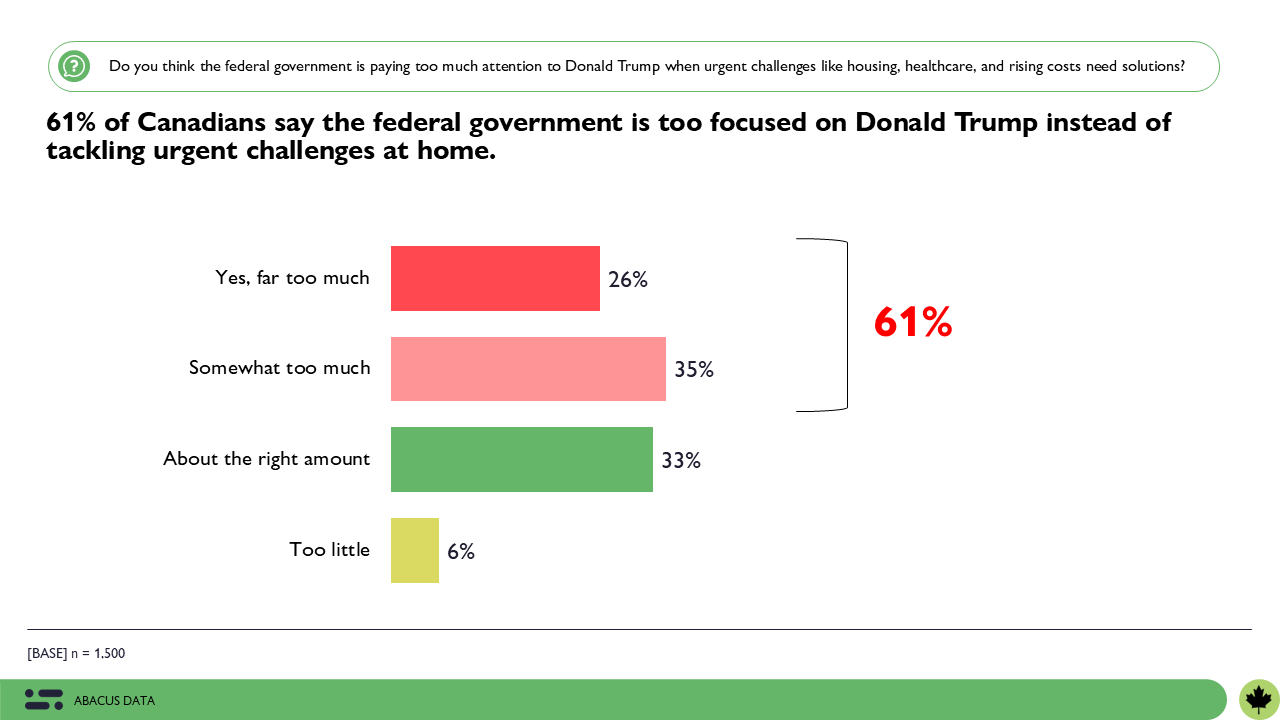
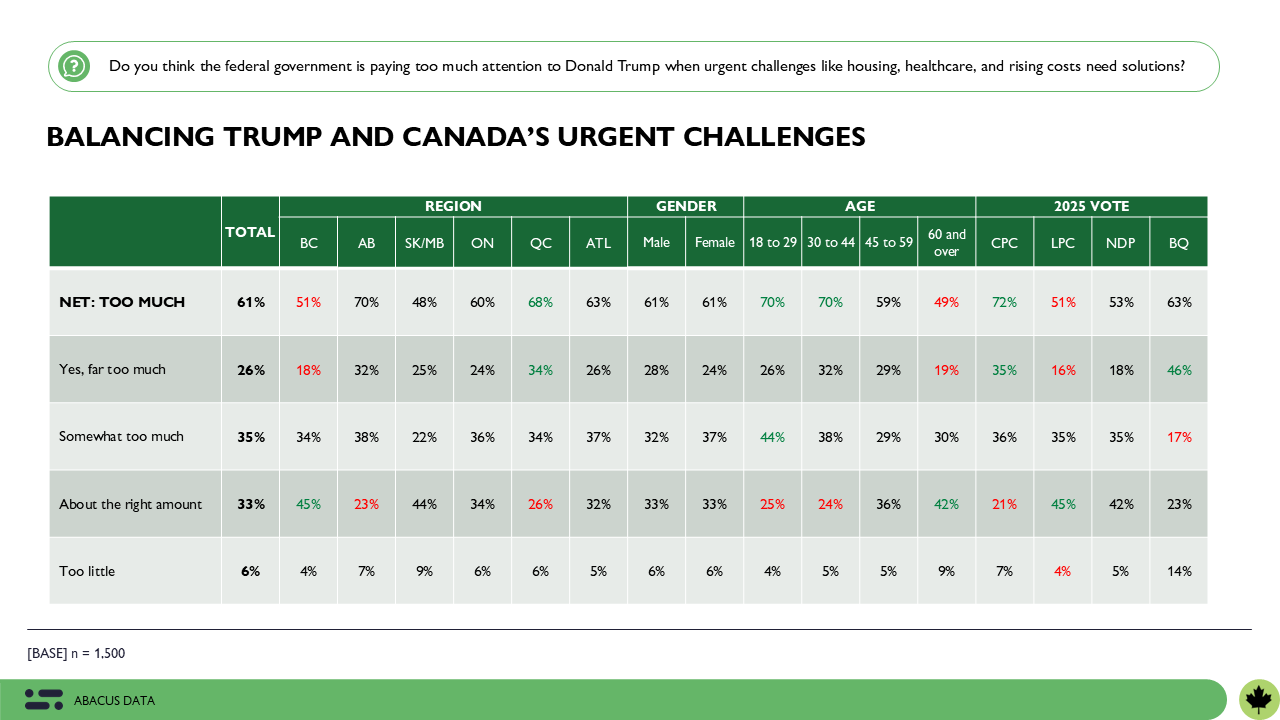
Next 2 Years: Domestic Issues Seen as the Greater Threat
When looking ahead to the next two years, most Canadians see domestic challenges as the bigger threat:
- 60% say issues like housing affordability, healthcare, and rising costs pose the greatest risk to the country.
- 40% believe Trump’s policies and unpredictability are the larger danger.
Younger Canadians are especially concerned about domestic challenges, while older Canadians are more evenly split. Politically, Conservative voters are far more likely to see domestic crises as the bigger danger, while Liberal voters are evenly divided.
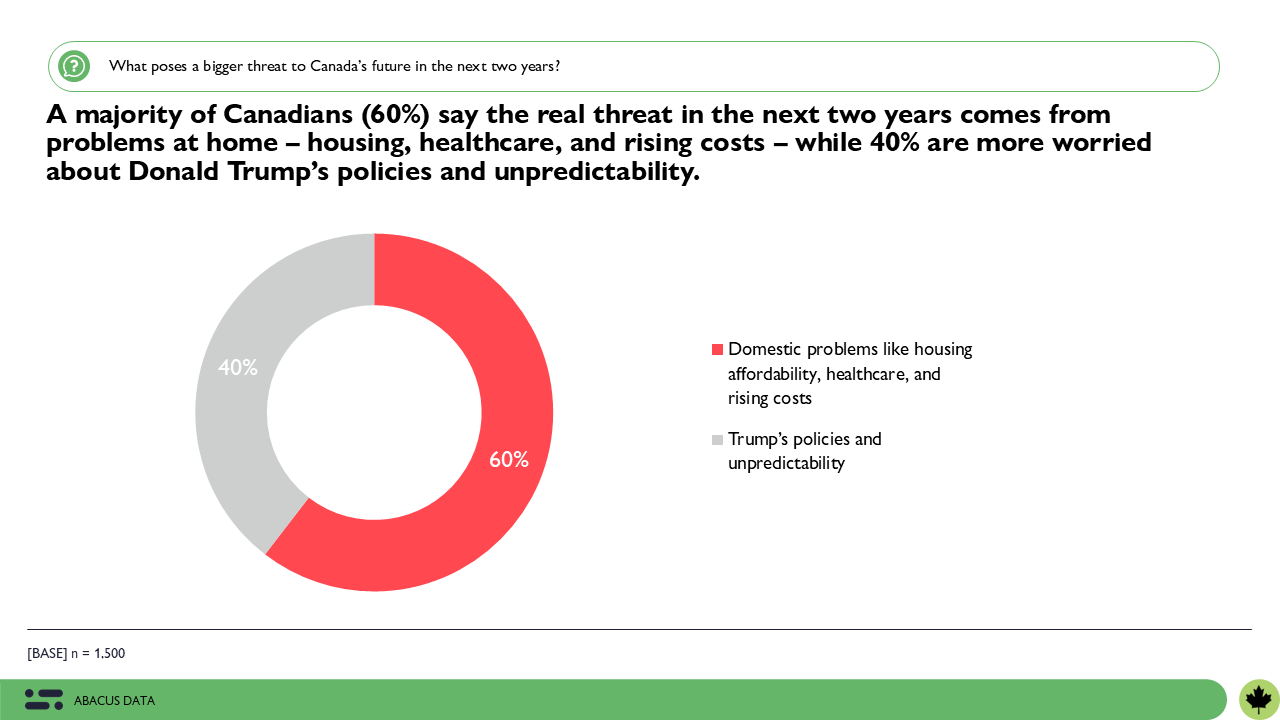
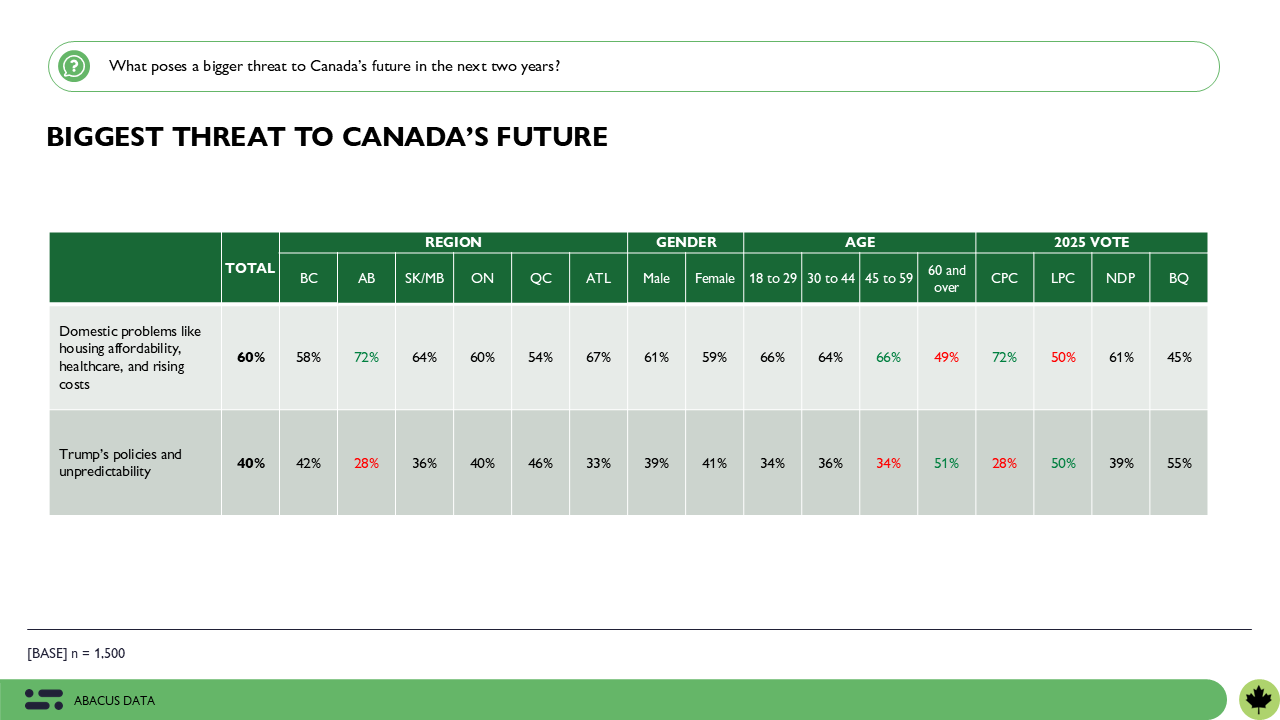
This indicates that while Canadians understand the significance of Trump’s influence, their priority remains solving urgent problems at home. To build their trust, the federal government must clearly demonstrate how tackling global challenges will lead to meaningful, tangible improvements in Canadians’ everyday lives, showing how actions on the world stage directly translate into progress on housing, healthcare, and affordability.
Families Are Feeling the Strain
This sentiment becomes even sharper at the personal level. Nearly eight in ten Canadians (79%) say rising costs, housing, and healthcare will have a greater impact on their families over the next two years than U.S. tariffs or trade policies (21%).
Again, this suggests that people may not understand the relationship between Trump’s trade policies and domestic micro-economic and social issues. The federal government may need to spend more time connecting the dots for Canadians, explaining why getting a deal and why it’s focusing so much on getting that deal, is important to everything else.
This perspective cuts across all regions, age groups, and political leanings, with the strongest concern among middle-aged Canadians juggling mortgages, childcare, and aging parents (83% of 30-44 and 86% of 45-59). Even among Liberal voters, 71% admit their day-to-day struggles are shaped far more by domestic affordability challenges than by Trump’s actions abroad.
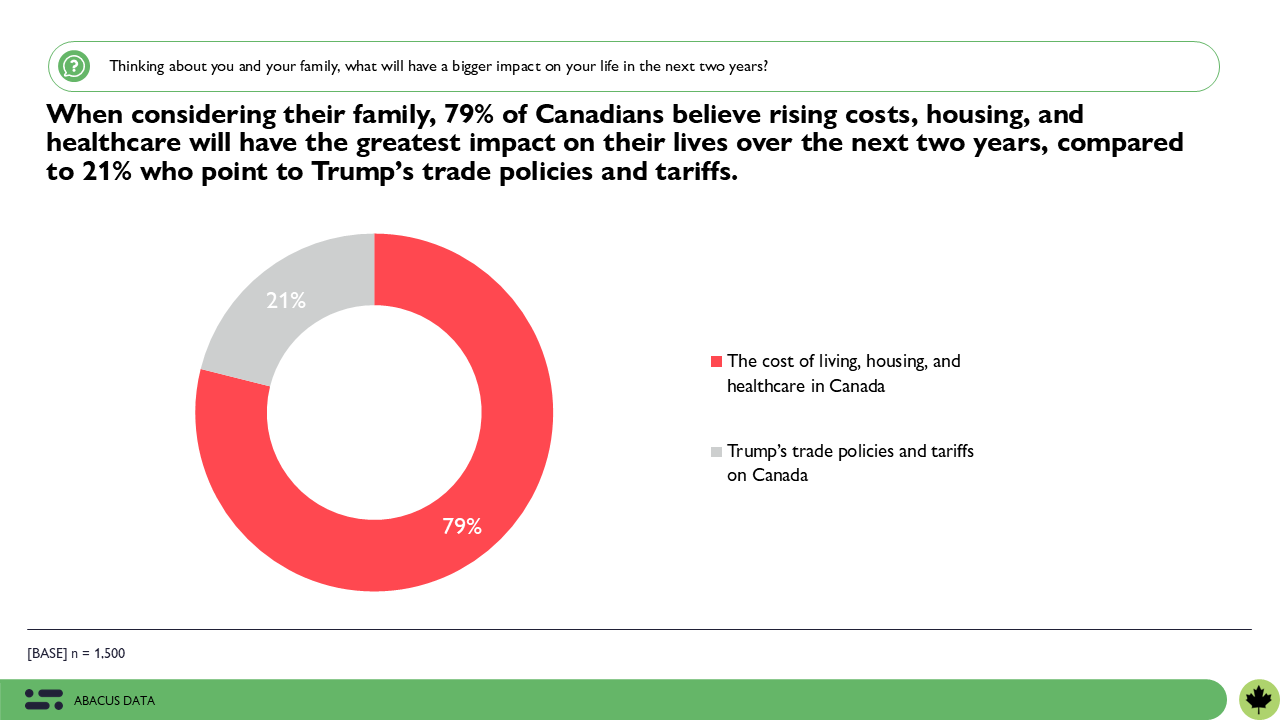
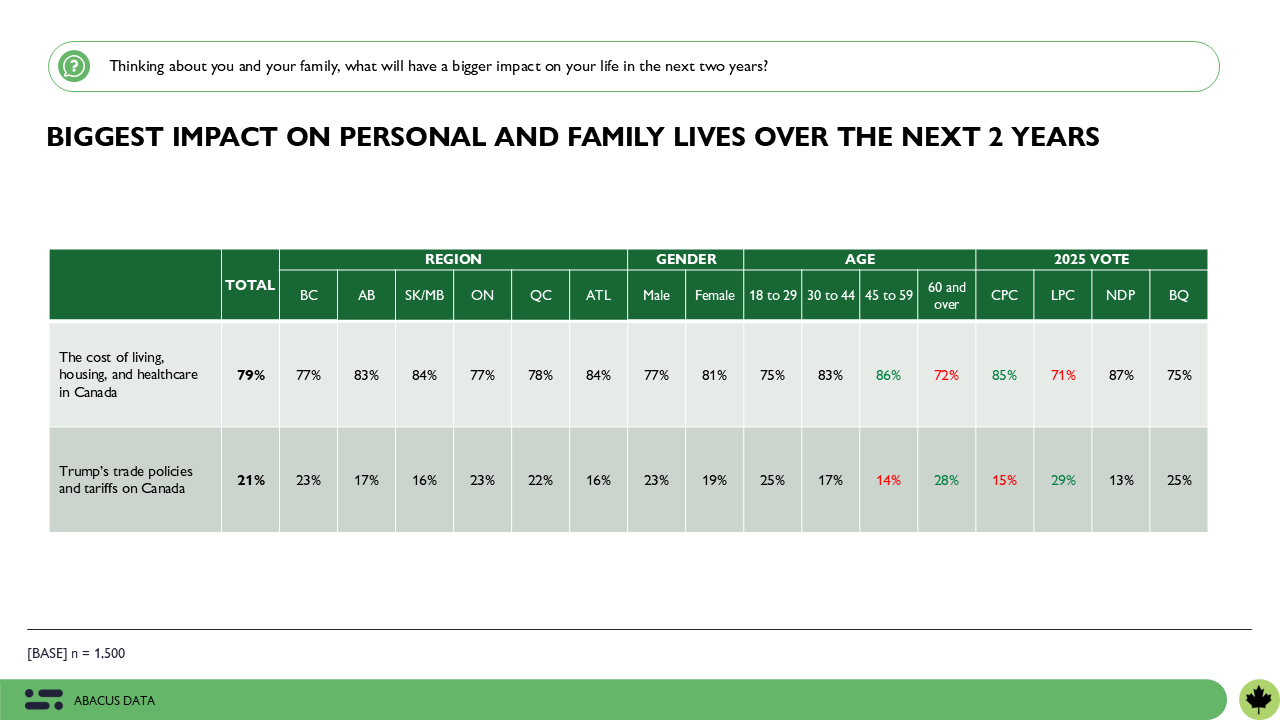
What Canadians Want Leaders to Prioritize
Three in four Canadians (76%) believe federal leaders should spend more time fixing problems at home – housing, healthcare, and affordability – while just 24% want them focused on managing Trump’s policies.
This consensus spans party lines: 82% of Conservative voters and 69% of Liberal supporters agree that domestic issues must come first.
The takeaway for Ottawa is clear: Canadians expect their leaders to keep their eyes firmly on challenges at home, even while managing the complexities of the U.S. relationship.
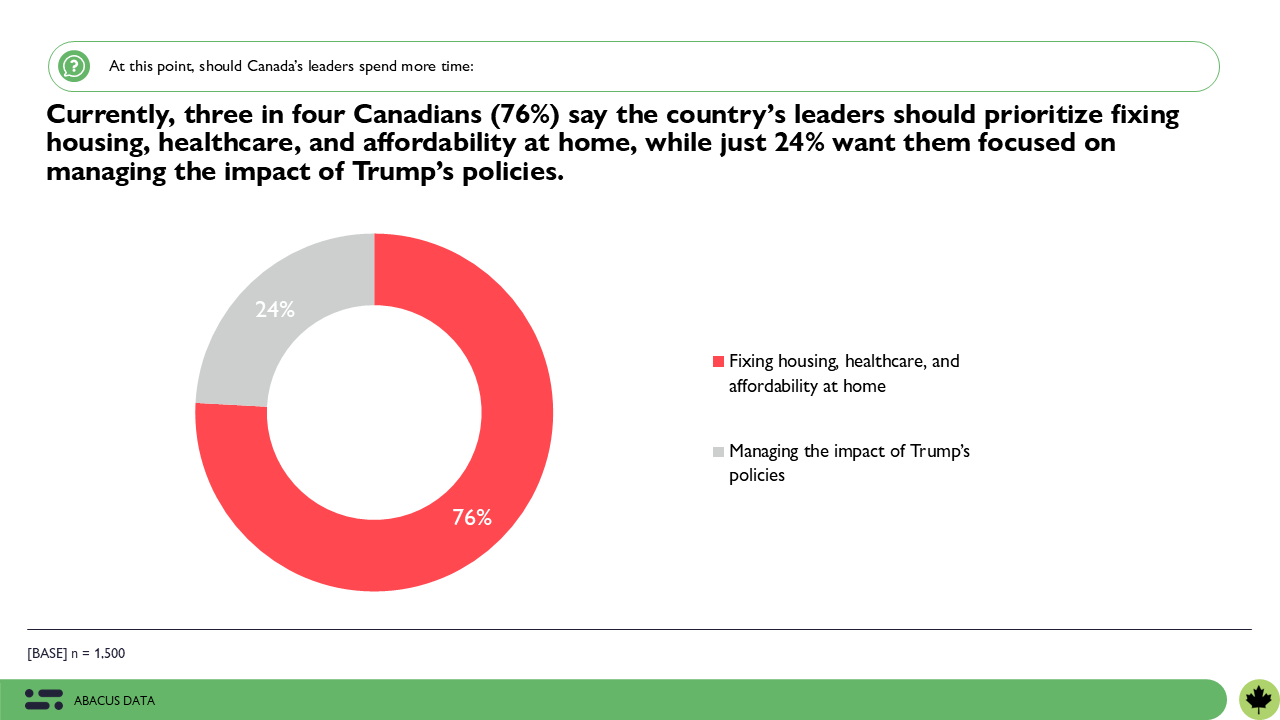
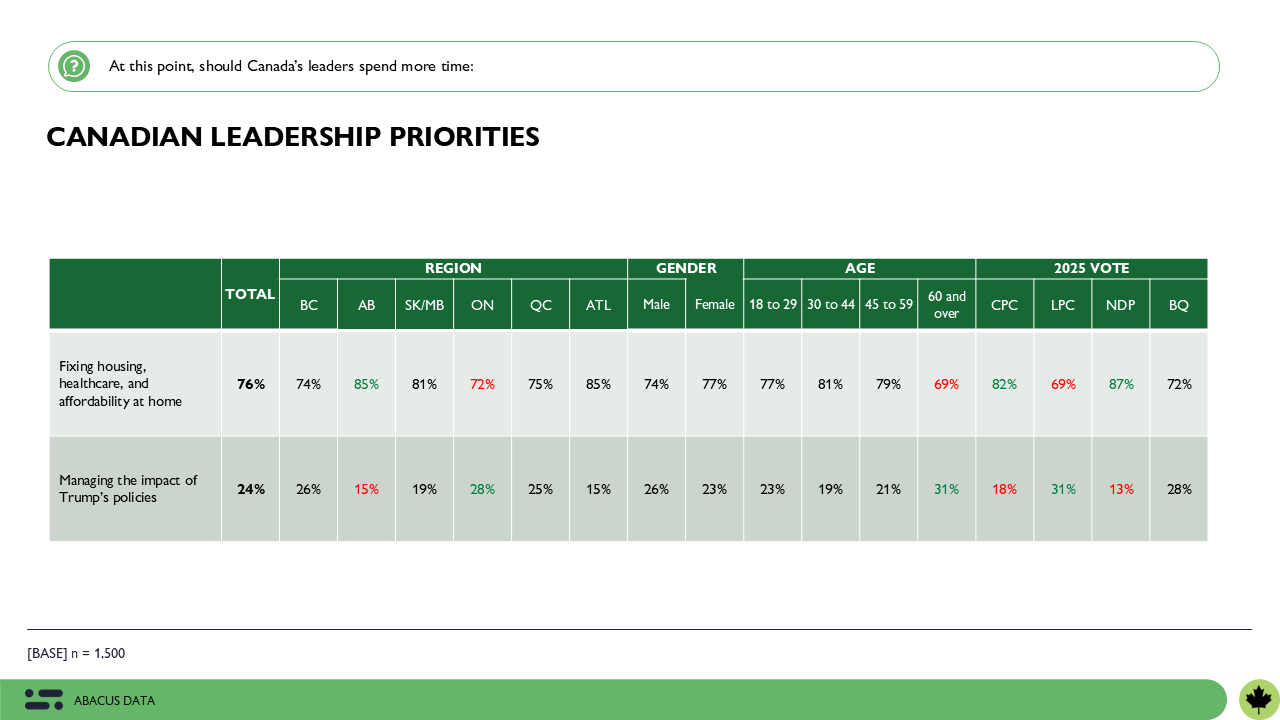
Canadians Divided on Trump and Trade
While Canadians want their leaders to focus on domestic issues, they also recognize that Trump matters. But they are divided on whether Prime Minister Mark Carney can successfully navigate a trade deal – 38% believe Carney is likely to secure a fair trade deal with the U.S. under Trump while 47% believe it is unlikely. Younger Canadians and Liberal voters tend to be more optimistic, while older Canadians and Conservatives are far more skeptical.
This split highlights two things. One, that many Canadians don’t think a secure and fair trade deal with the U.S. is likely to happen – either because they don’t think Trump will ever agree to one or because they don’t think the Carney government can achieve it. Second, it also suggests that only a small minority of Canadians expect one to be reached, providing evidence that the Carney government may not be blamed if a good deal is not achieved.
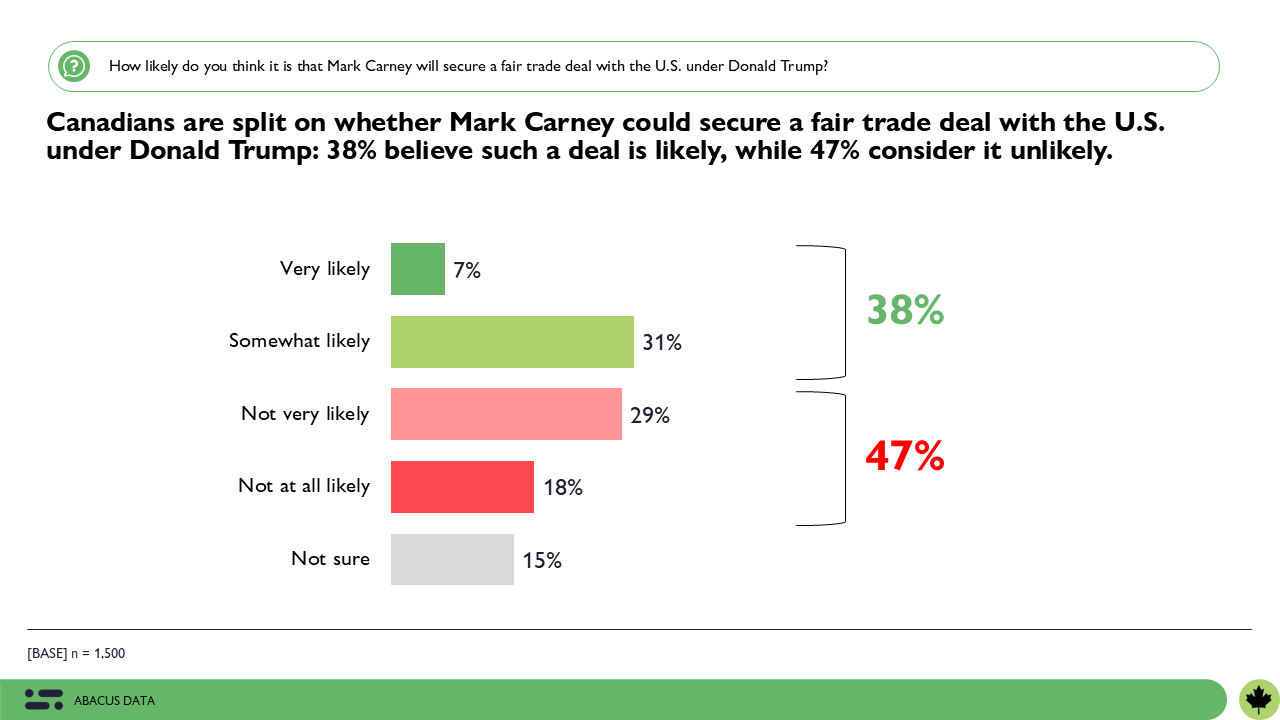
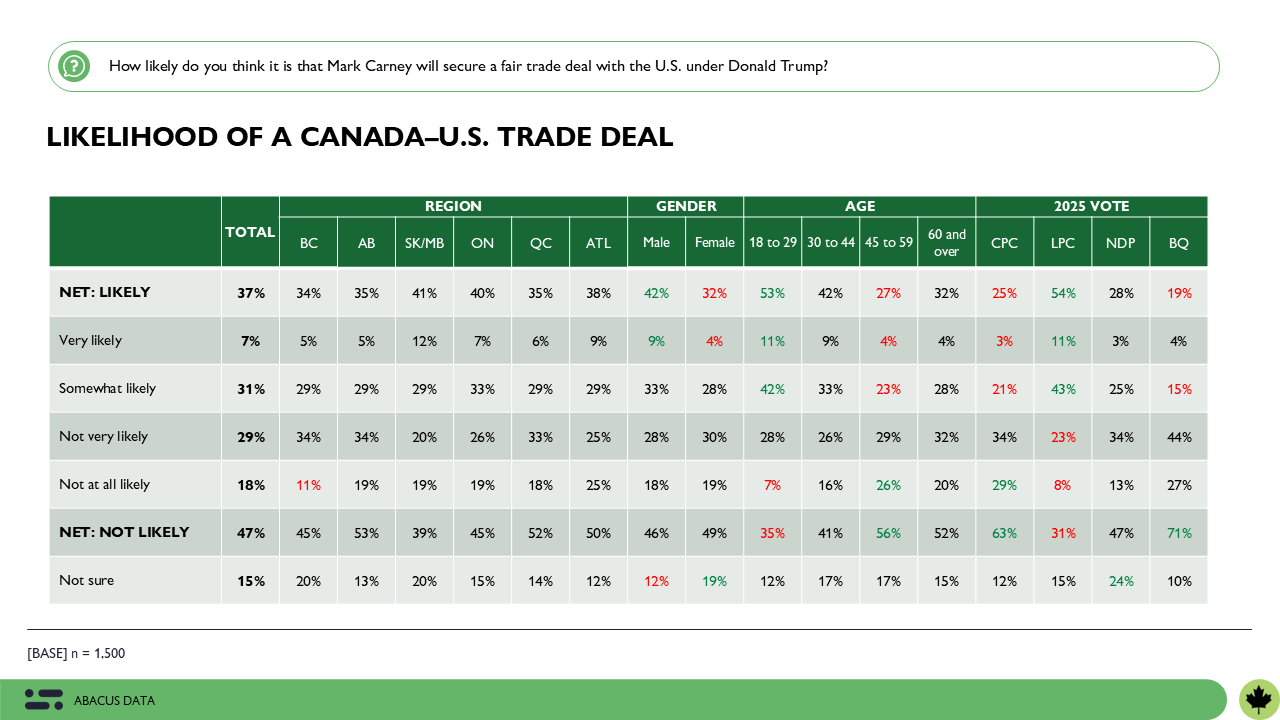
Exhaustion with Trump Coverage
Perhaps the strongest signal in the data is emotional: 85% of Canadians say they are tired of hearing about Donald Trump.
This fatigue is shared across the political spectrum – 87% of Conservative voters and 82% of Liberal voters feel the same way.
Canadians understand that managing Trump and his policies is important, but they don’t want it dominating headlines or overshadowing the urgent problems they face at home – like housing, healthcare, and rising costs – that demand immediate attention.
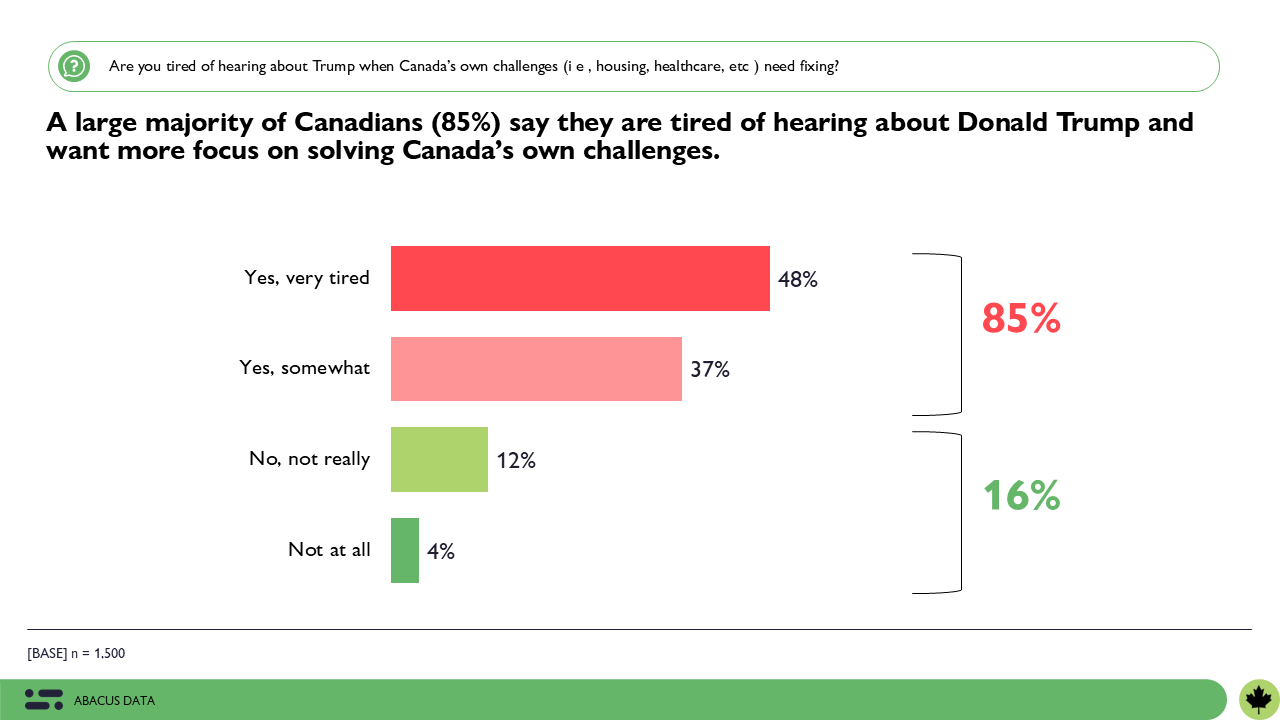
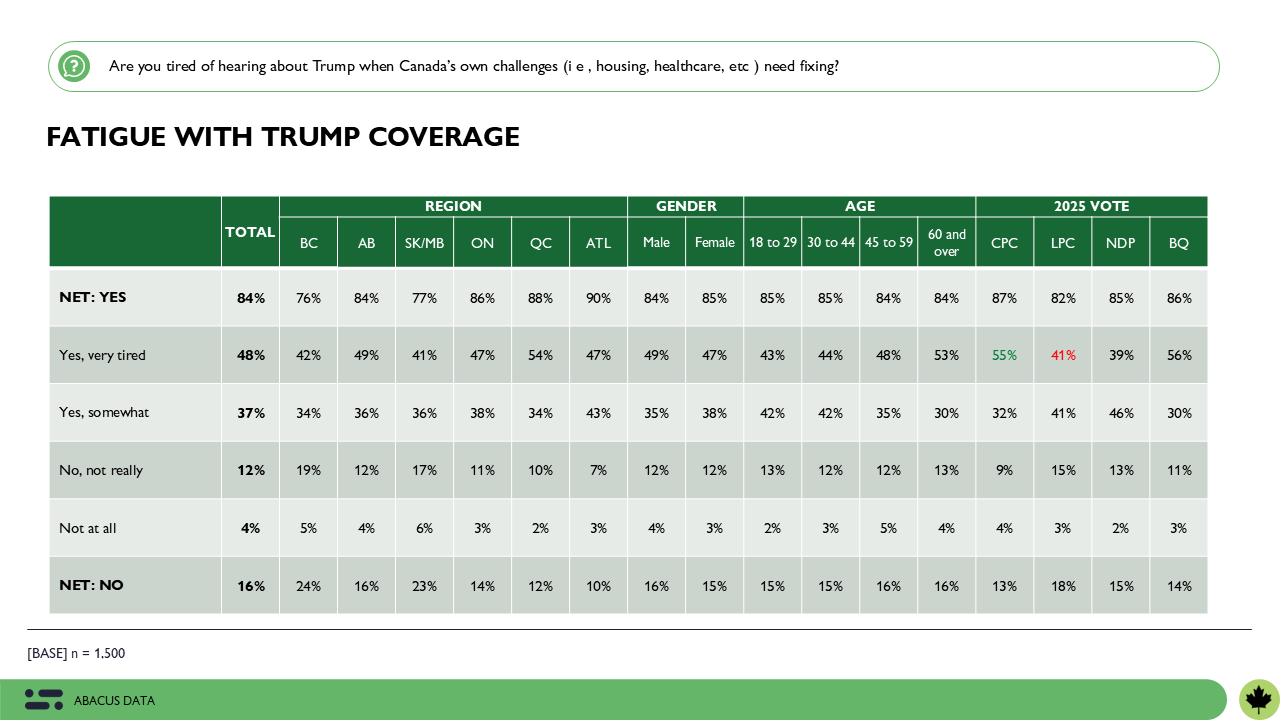
The Upshot
Managing Trump’s unpredictability is undeniably important for Canada’s future and a key concern for governments at every level. Getting it right creates an opportunity to build trust and momentum, showing Canadians that skillful management of global challenges can lead to stability, growth, and meaningful improvements in their daily lives. Getting it wrong, however, could derail progress on every other priority, undermining public confidence and leaving Canadians feeling unprotected both at home and abroad.
This is where the perception gap emerges. While Ottawa may view global negotiations and U.S. relations as essential to Canada’s long-term stability, most Canadians are focused on the here and now – housing they can afford, healthcare they can access, and rising costs they can manage. For many, these urgent domestic crises feel disconnected from the government’s trade agenda, fueling a sense that their immediate struggles are being overshadowed by debates and decisions that seem distant from their daily lives.
To close this gap, Ottawa must help Canadians see the connections between the macro and the micro. Decisions about trade, cross-border tensions, and economic stability need to be clearly linked to tangible, local benefits. Canadians need to understand how actions taken on the global stage lead to shorter ER waits, more affordable groceries, and greater housing stability. Voters are open to growth and stability narratives – but only if they feel real, relevant, and fair.
As Parliament resumes, the challenge for the Liberals isn’t just navigating Trump; it’s convincing Canadians that their government understands what matters most to them and can deliver on it. This means demonstrating that every move – whether a trade negotiation or a response to Trump’s policies – has a direct and visible payoff for Canadians at home.
For the Conservatives, the opportunity lies in positioning themselves as the party laser-focused on the everyday struggles Canadians face. By framing the Liberals as distracted by international affairs and disconnected from real-world challenges, they can make the case that they are the party best equipped to restore balance and put domestic priorities first.
In the months ahead, the battle won’t just be about Trump or trade deals. It will be about whether Canadians believe their government understands what they need and is focused on delivering it. The party that closes this perception gap will not only win the political debate but will define the direction of the country heading into the next election.
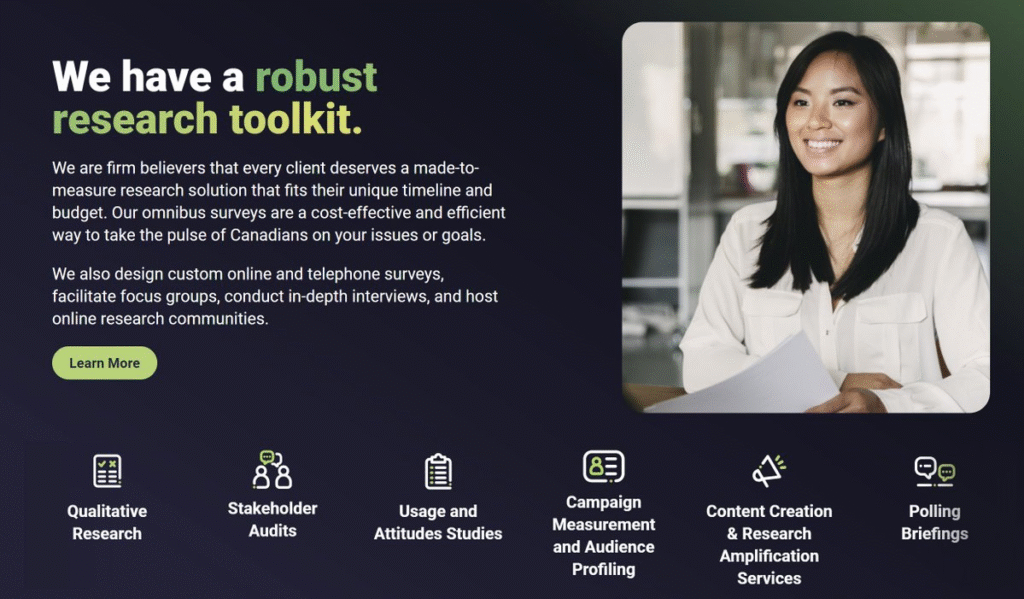
Methodology
The survey was conducted with 1,500 Canadian adults from August 28 to September 2, 2025. A random sample of panelists were invited to complete the survey from a set of partner panels based on the Lucid exchange platform. These partners are typically double opt-in survey panels, blended to manage out potential skews in the data from a single source.
The margin of error for a comparable probability-based random sample of the same size is +/- 2.53%, 19 times out of 20.
The data were weighted according to census data to ensure that the sample matched Canada’s population according to age, gender, educational attainment, and region.
This survey was paid for by Abacus Data.
Abacus Data follows the CRIC Public Opinion Research Standards and Disclosure Requirements that can be found here: https://canadianresearchinsightscouncil.ca/standards/
About Abacus Data
We are Canada’s most sought-after and influential full-service market and public opinion research agency.
But what we really do is identify the unmet needs of your audience and develop strategies for you to meet those unmet needs first.
Through qualitative and quantitative research methods, our deep experience and and wide perspective, we ask the right questions that capture insights, show you where things are going to be, and help our clients navigate some of their biggest challenges, deepen relationships with customers and stakeholders, and better understand the road ahead.


